
This Interactive Visual Installation was commissioned to INDI with the focus of enhancing research in the areas of psychology and linguistics; to facilitate the exploration of the connections between the behavior of body metrics such as heartbeat and blood pressure with emotions such as fear and love.
3D Visuals run on Touch Designer and react in real-time to study subjects using multiple sensors worn on their heads and hands as well as around them.
Commissioned by :
Digital Humanities Research Group at UNAM and Tec de Monterrey

This Interactive Visual Installation was commissioned to INDI with the focus of enhancing research in the areas of psychology and linguistics; to facilitate the exploration of the connections between the behavior of body metrics such as heartbeat and blood pressure with emotions such as fear and love.
3D Visuals run on Touch Designer and react in real-time to study subjects using multiple sensors worn on their heads and hands as well as around them.
Commissioned by :
Digital Humanities Research Group at UNAM and Tec de Monterrey

Tec de Monterrey University and Professor Manuel Macías commissioned INDI on a one-year Business Development project to undergo market adaptation of their Original-IP Remote Laboratory Technology with a focus on accessing the Chinese market.
On-Site activities allowed for Strategic Product Development and Practical Business Development Guidelines to be developed for the project and for replication by other projects supported by the Univerity's International Center.
Commissioned by :
Tec Hub + Mexico-China Center China
Laiboyan China
Intellectual Property :
Tec de Monterrey Mexico Laiboyan Mexico

Following her research on the effects of light on behavioral patterns of children with autism, Professor Nadia Merad Coliac commissioned INDI to design and develop artificial replicas of her bioluminiscent bacteria - which she grows, feeds, and presents in laboratory-sample Petri Dishes.
An original electronic system and an initial batch of LUXAUT Lights focused on matching the specific Light-Wavelength of her bacteria were developed for clinical experimentation to be undergone during 2024, for scientific publication shortly after.
Commissioned by :
Nadia Merad Coliac
Institut de Neurophysiopathologie @ Université d'Aix-Marseille
Capsule d'Art France

Tec de Monterrey University and Professor Manuel Macías commissioned INDI on a one-year Business Development project to undergo market adaptation of their Original-IP Remote Laboratory Technology with a focus on accessing the Chinese market.
On-Site activities allowed for Strategic Product Development and Practical Business Development Guidelines to be developed for the project and for replication by other projects supported by the Univerity's International Center.
Commissioned by :
Tec Hub + Mexico-China Center China
Laiboyan China
Intellectual Property :
Tec de Monterrey Mexico
Laiboyan Mexico

Following her research on the effects of light on behavioral patterns of children with autism, Professor Nadia Merad Coliac commissioned INDI to design and develop artificial replicas of her bioluminiscent bacteria - which she grows, feeds, and presents in laboratory-sample Petri Dishes.
An original electronic system and an initial batch of LUXAUT Lights focused on matching the specific Light-Wavelength of her bacteria were developed for clinical experimentation to be undergone during 2024, for scientific publication shortly after.
Commissioned by :
Nadia Merad Coliac
Institut de Neurophysiopathologie @ Université d'Aix-Marseille
Capsule d'Art France

Équipés d'un casque EEG (Électroencéphalographie), permettant de mesurer l'activité électrique du cerveau, les visiteurs découvrent leur activité neuronale face aux œuvres analysées en temps réel puis retranscrite en onde lumineuses et sonores, créant ainsi une œuvre artistique éphémère.
Commissioned by :
Musée Granet and Arts Vivants Aix

Équipés d'un casque EEG (Électroencéphalographie), permettant de mesurer l'activité électrique du cerveau, les visiteurs découvrent leur activité neuronale face aux œuvres analysées en temps réel puis retranscrite en onde lumineuses et sonores, créant ainsi une œuvre artistique éphémère.
Commissioned by :
Musée Granet and Arts Vivants Aix

Tec de Monterrey University and Professor Manuel Macías commissioned INDI on a one-year Business Development project to undergo market adaptation of their Original-IP Remote Laboratory Technology with a focus on accessing the Chinese market.
On-Site activities allowed for Strategic Product Development and Practical Business Development Guidelines to be developed for the project and for replication by other projects supported by the Univerity's International Center.
Commissioned by :
Tec Hub + Mexico-China Center China
Laiboyan China
Intellectual Property :
Tec de Monterrey Mexico
Laiboyan Mexico

Équipés d'un casque EEG (Électroencéphalographie), permettant de mesurer l'activité électrique du cerveau, les visiteurs découvrent leur activité neuronale face aux œuvres analysées en temps réel puis retranscrite en onde lumineuses et sonores, créant ainsi une œuvre artistique éphémère.
Commissioned by :
Musée Granet and Arts Vivants Aix
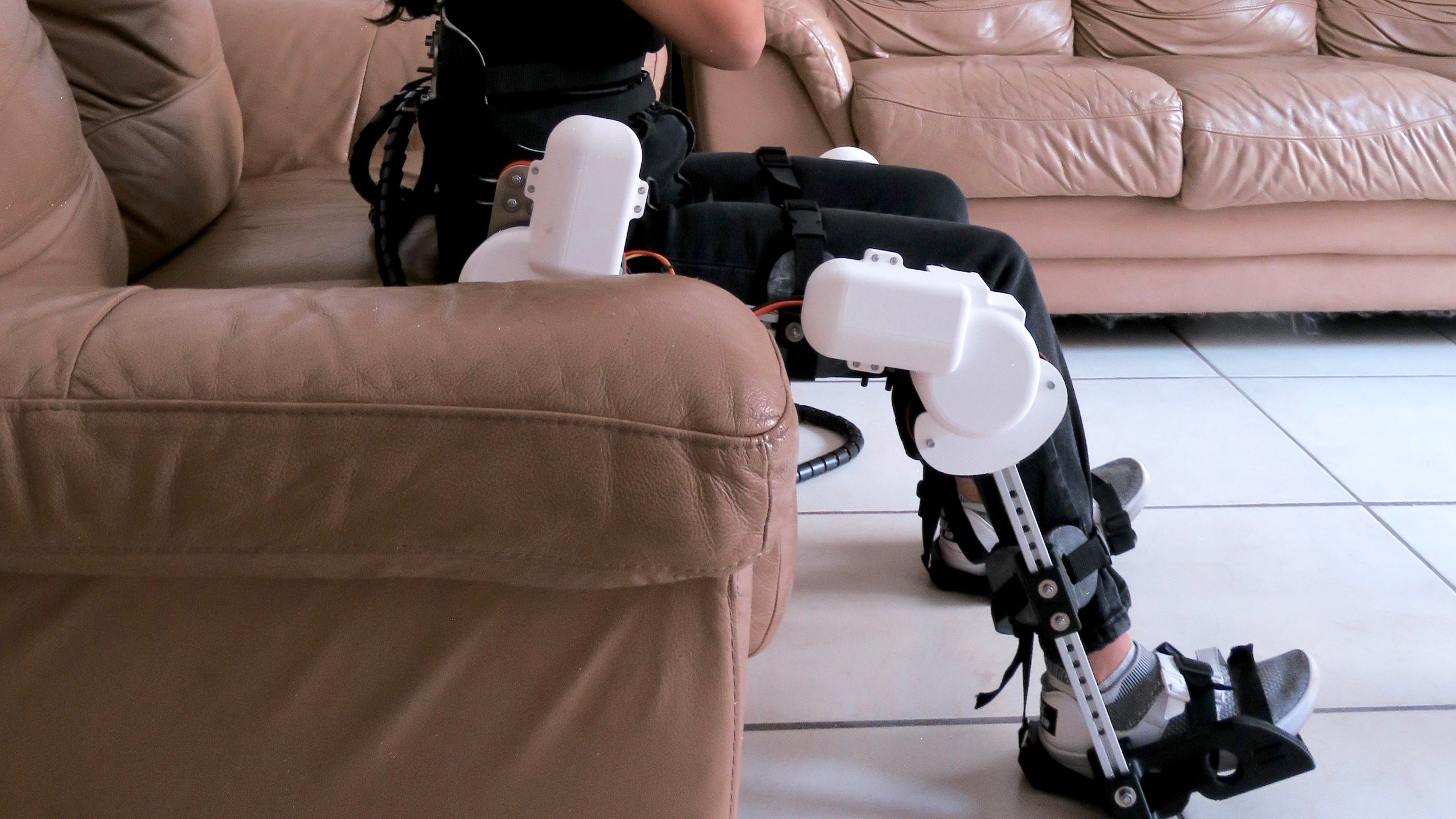
Public project focused on online- and offline-feedback rehabilitation exoskeletons increasing training efficiency and facilitating usage in non-laboratory environments.
Included design and software improvements to the Alice Exoskeleton focused on user-friendliness and usage by non-specialized personnel.
Commissioned by :
DIH Technology Demonstrator (Horizon 2020)
Intellectual property :
INDI Ingénierie et Design (France)mBrainTrain (Serbia)
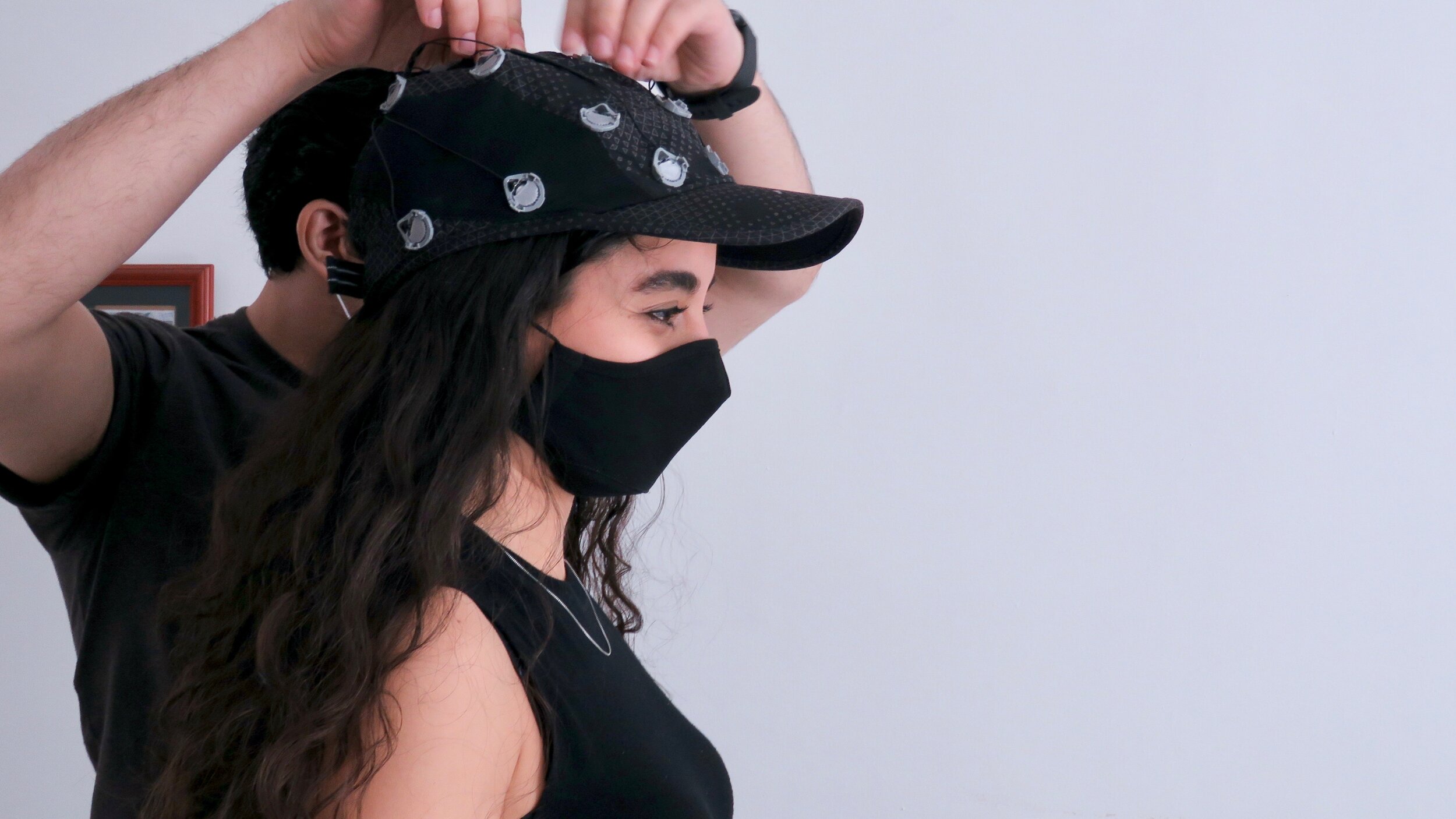
Public project focused on online- and offline-feedback rehabilitation exoskeletons increasing training efficiency and facilitating usage in non-laboratory environments.
Included design and software improvements to the Alice Exoskeleton focused on user-friendliness and usage by non-specialized personnel.
Commissioned by :
DIH Technology Demonstrator (Horizon 2020)
Intellectual property :
INDI Ingénierie et Design (France)
mBrainTrain (Serbia)

Public project focused on online- and offline-feedback rehabilitation exoskeletons increasing training efficiency and facilitating usage in non-laboratory environments.
Included design and software improvements to the Alice Exoskeleton focused on user-friendliness and usage by non-specialized personnel.
Commissioned by :
DIH Technology Demonstrator (Horizon 2020)
Intellectual property :
INDI Ingénierie et Design (France)
mBrainTrain (Serbia)

Interactive and Generative audiovisual installation for a public music festival at Château de la Tour D’Aigues.
A new take on one of Neon SciFi’s Brain Machines allowing the audience to control the light and colors which filled event and the castle’s atmosphere.
Commissioned by :
Parea Production France

Interactive and Generative audiovisual installation for a public music festival at Château de la Tour D’Aigues.
A new take on one of Neon SciFi’s Brain Machines allowing the audience to control the light and colors which filled event and the castle’s atmosphere.
Commissioned by :
Parea Production France
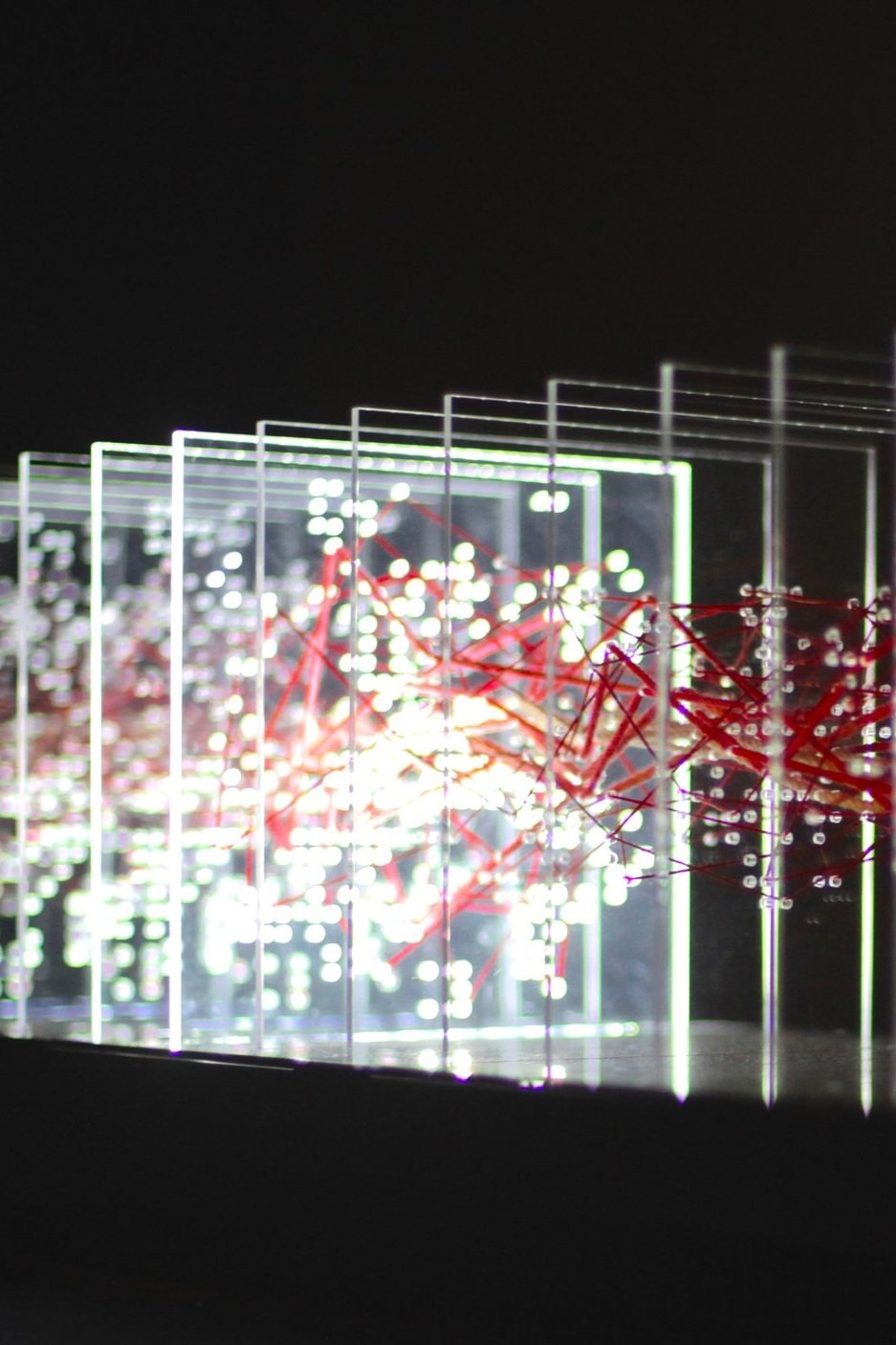
A piece which holds, portrays, and plays back 56 seconds of a woman’s experience in discovering an abstract painting by Anne-Marie Renan.
By capturing and imprinting the unconscious internal reactions in the brain, it attempts to record and maintain significant moments in deeper and truer ways.
Media and technique :
- 14 x Individual 12V DC LED-Lit + Hollowed Acrylic Panels on Arduino; intertwined by 1-3mm White/Red Cotton String
- 56 seconds of 15-25Hz PSD Brain Data captured on Emotiv Epoc+ and processed in Python 3.7
- Hole Patterns generated processing Brain Data through Touch Designer

A piece which holds, portrays, and plays back 56 seconds of a woman’s experience in discovering an abstract painting by Anne-Marie Renan.
By capturing and imprinting the unconscious internal reactions in the brain, it attempts to record and maintain significant moments in deeper and truer ways.
Media and technique :
- 14 x Individual 12V DC LED-Lit + Hollowed Acrylic Panels on Arduino; intertwined by 1-3mm White/Red Cotton String
- 56 seconds of 15-25Hz PSD Brain Data captured on Emotiv Epoc+ and processed in Python 3.7
- Hole Patterns generated processing Brain Data through Touch Designer
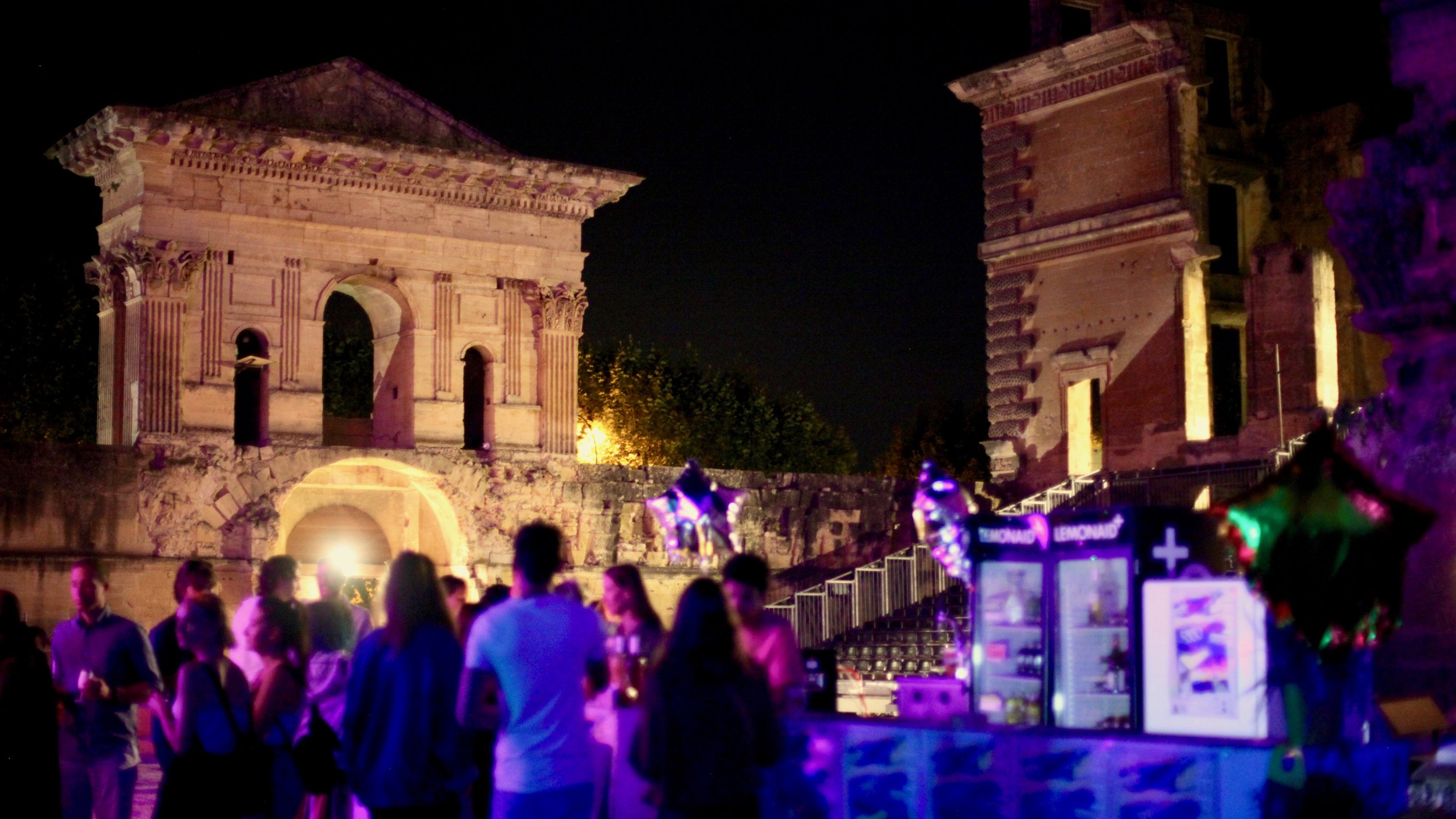
Interactive and Generative audiovisual installation for a public music festival at Château de la Tour D’Aigues.
A new take on one of Neon SciFi’s Brain Machines allowing the audience to control the light and colors which filled event and the castle’s atmosphere.
Commissioned by :
Parea Production France
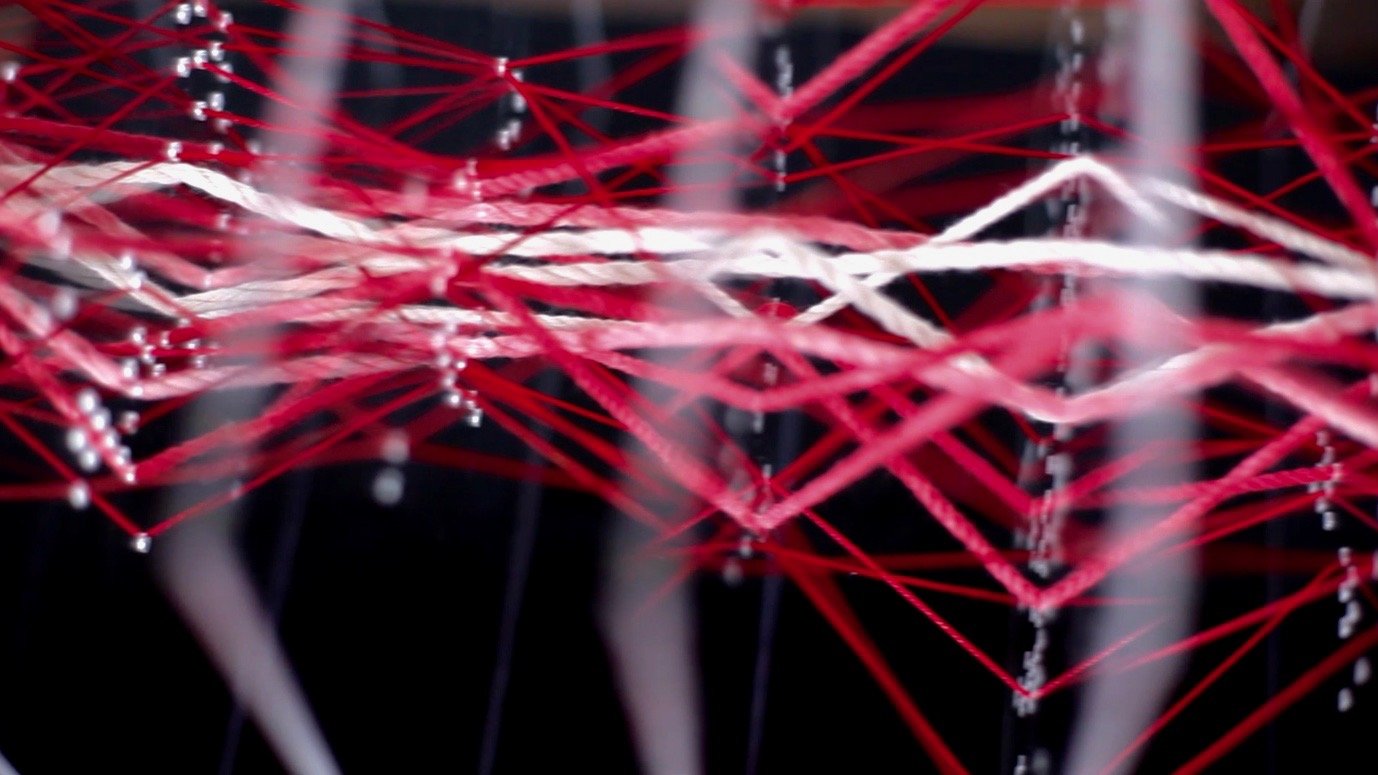
A piece which holds, portrays, and plays back 56 seconds of a woman’s experience in discovering an abstract painting by Anne-Marie Renan.
By capturing and imprinting the unconscious internal reactions in the brain, it attempts to record and maintain significant moments in deeper and truer ways.
Media and technique :
- 14 x Individual 12V DC LED-Lit + Hollowed Acrylic Panels on Arduino; intertwined by 1-3mm White/Red Cotton String
- 56 seconds of 15-25Hz PSD Brain Data captured on Emotiv Epoc+ and processed in Python 3.7
- Hole Patterns generated processing Brain Data through Touch Designer

An installation of light and sound where visitors are instructed to think about and concentrate on memories of people and things they like. Through increased focus and engagement of their brain activity on specific appealing thoughts, increased amounts of light and sounds are generated on the machine’s body of panels.
A public exercise and introspection on that which we cherish and kindly remember.
Media and technique :
Máquina cerebral 4 by INDI
~80m of 12V + 20Amp DC LEDs over MDF panels + Epoc+ Emotiv MoBI on Touch Designer

An installation of light and sound where visitors are instructed to think about and concentrate on memories of people and things they like. Through increased focus and engagement of their brain activity on specific appealing thoughts, increased amounts of light and sounds are generated on the machine’s body of panels.
A public exercise and introspection on that which we cherish and kindly remember.
Media and technique :
Máquina cerebral 4 by INDI
~80m of 12V + 20Amp DC LEDs over MDF panels + Epoc+ Emotiv MoBI on Touch Designer
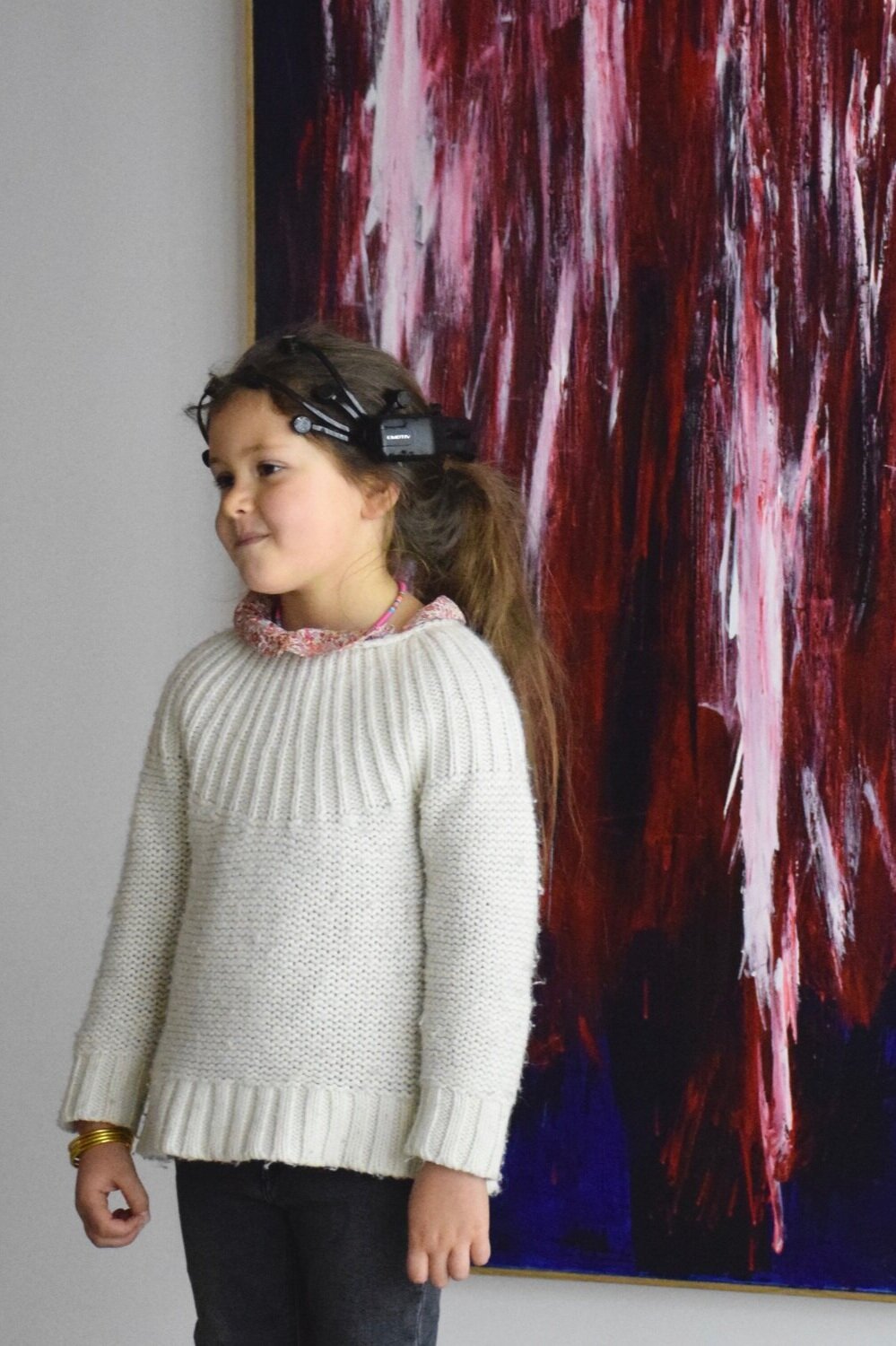
An ephemeral and real-time multi-sensory piece focused on the subjectivity of art appreciation.
Jesús Tamez-Duque challenges interacteurs to explore and question their reactions to Anne-Marie Renan's abstract art, as their engagement-related neural reactions are translated into room-engulfing light and sound.
What does each of us find engaging? Does the machine’s reaction shape our response in any way?
Media and technique :
Máquina cerebral 4 by INDI
~80m of 12V + 20Amp DC LEDs over MDF panels + Epoc+ Emotiv MoBI on Touch Designer
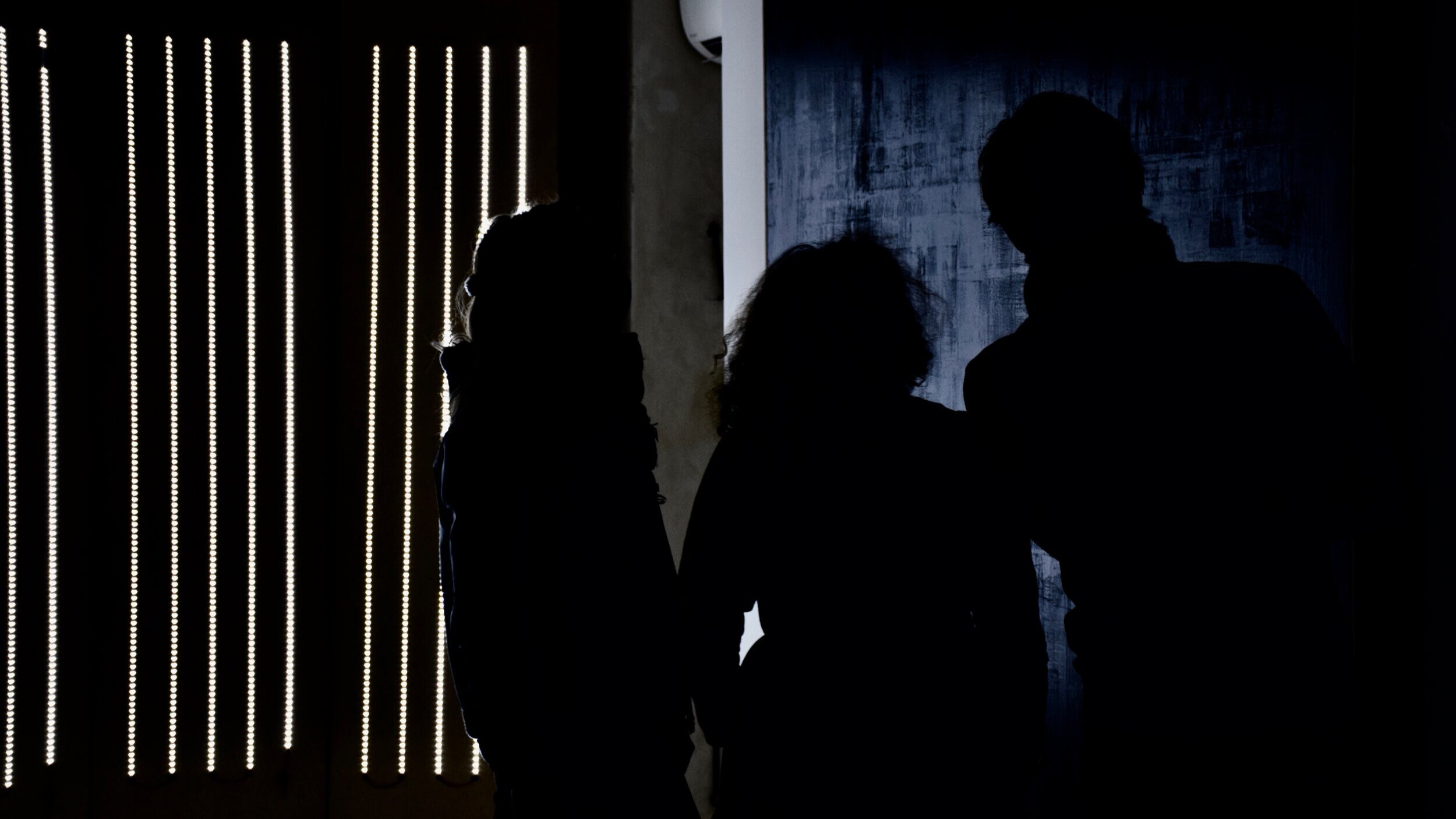
An ephemeral and real-time multi-sensory piece focused on the subjectivity of art appreciation.
Jesús Tamez-Duque challenges interacteurs to explore and question their reactions to Anne-Marie Renan's abstract art, as their engagement-related neural reactions are translated into room-engulfing light and sound.
What does each of us find engaging? Does the machine’s reaction shape our response in any way?
Media and technique :
Máquina cerebral 4 by INDI
~80m of 12V + 20Amp DC LEDs over MDF panels + Epoc+ Emotiv MoBI on Touch Designer
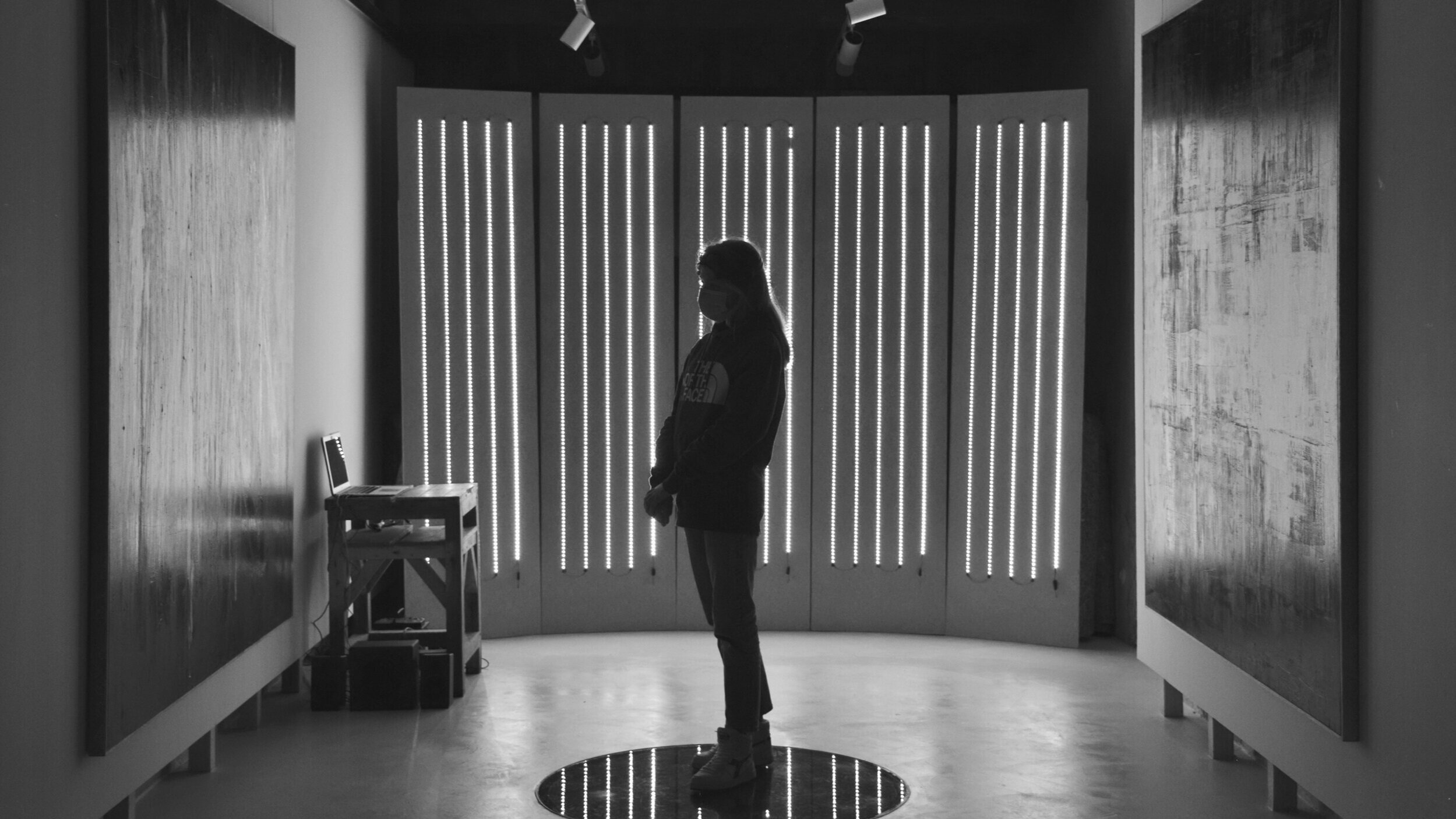
An ephemeral and real-time multi-sensory piece focused on the subjectivity of art appreciation.
Jesús Tamez-Duque challenges interacteurs to explore and question their reactions to Anne-Marie Renan's abstract art, as their engagement-related neural reactions are translated into room-engulfing light and sound.
What does each of us find engaging? Does the machine’s reaction shape our response in any way?
Media and technique :
Máquina cerebral 4 by INDI
~80m of 12V + 20Amp DC LEDs over MDF panels + Epoc+ Emotiv MoBI on Touch Designer
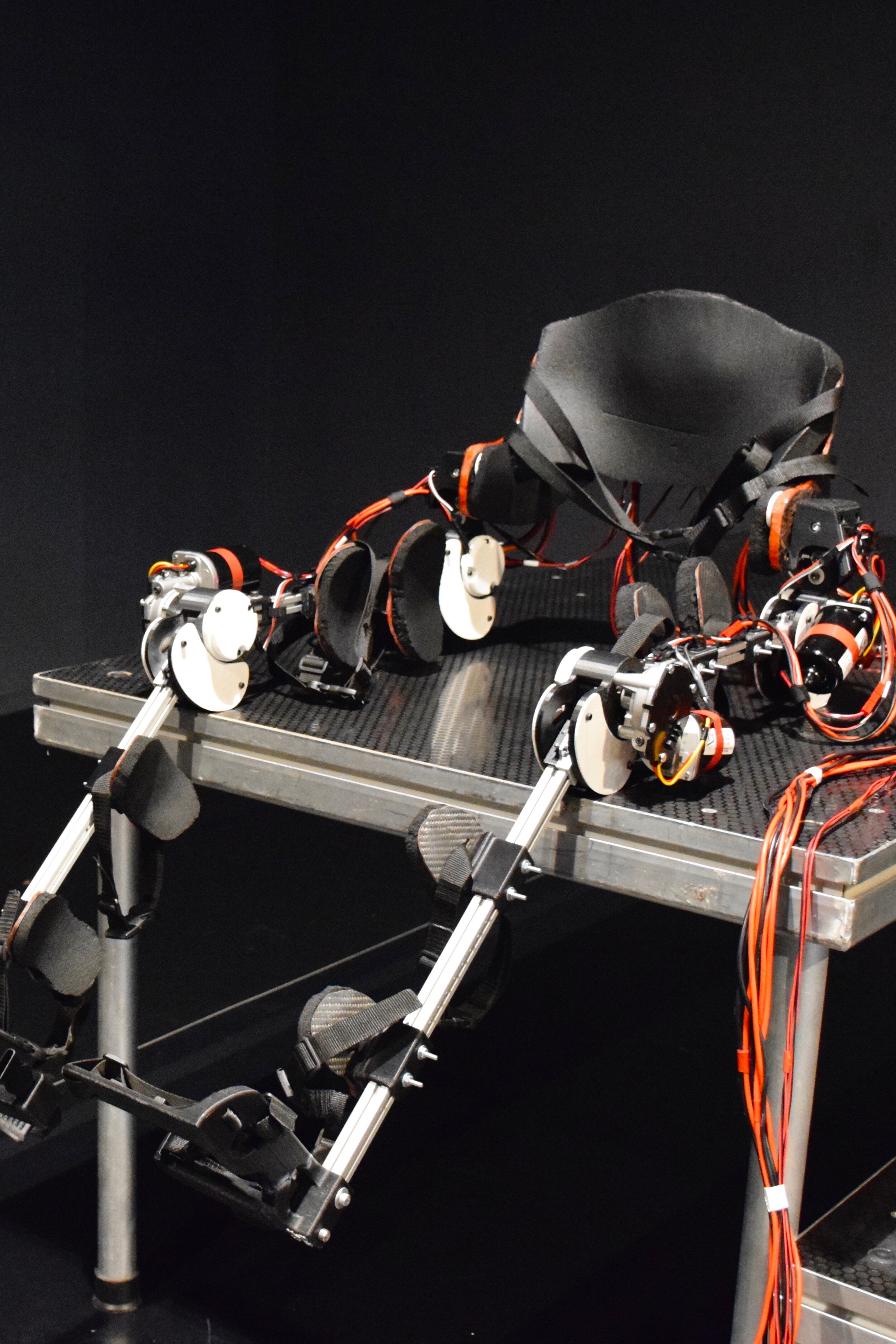
The L’Org Exoskeleton was developed for an exploratory project with CIE Shonen (Marseille,France) to push the boundaries of contemporary ballet using wearable machines overpowering, limiting, and pushing dancers’ bodies.
Work is still ongoing to find the best performance embodiment for this mixture of robotics and dance.
Media and technique :
L’Org Powered Exoskeleton
26Nm/12V DC Motors on Arduino over Metal, Plastic, and Carbon Fiber Structure
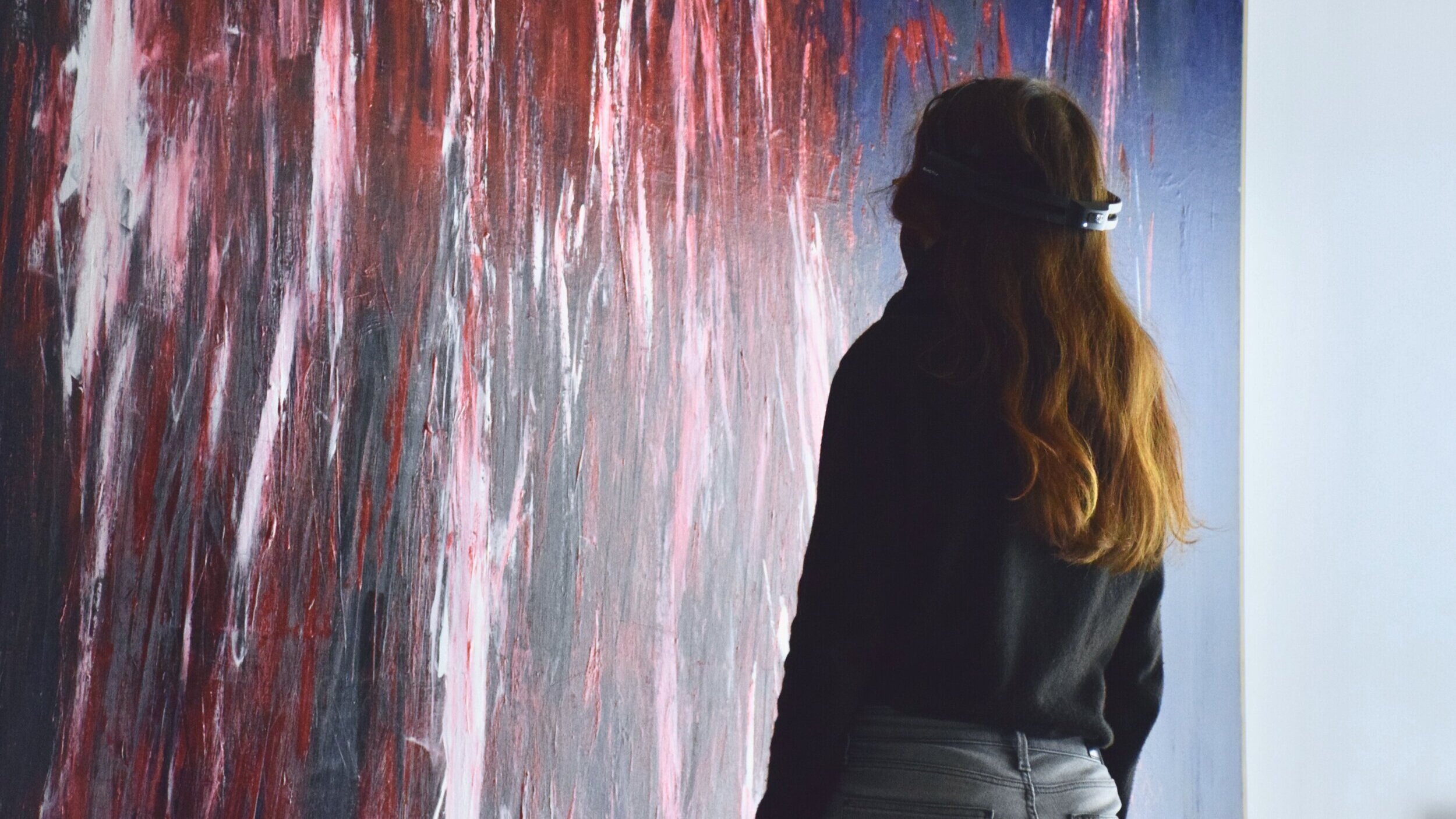
An ephemeral and real-time multi-sensory piece focused on the subjectivity of art appreciation.
Jesús Tamez-Duque challenges interacteurs to explore and question their reactions to Anne-Marie Renan's abstract art, as their engagement-related neural reactions are translated into room-engulfing light and sound.
What does each of us find engaging? Does the machine’s reaction shape our response in any way?
Media and technique :
Máquina cerebral 4 by INDI
~80m of 12V + 20Amp DC LEDs over MDF panels + Epoc+ Emotiv MoBI on Touch Designer
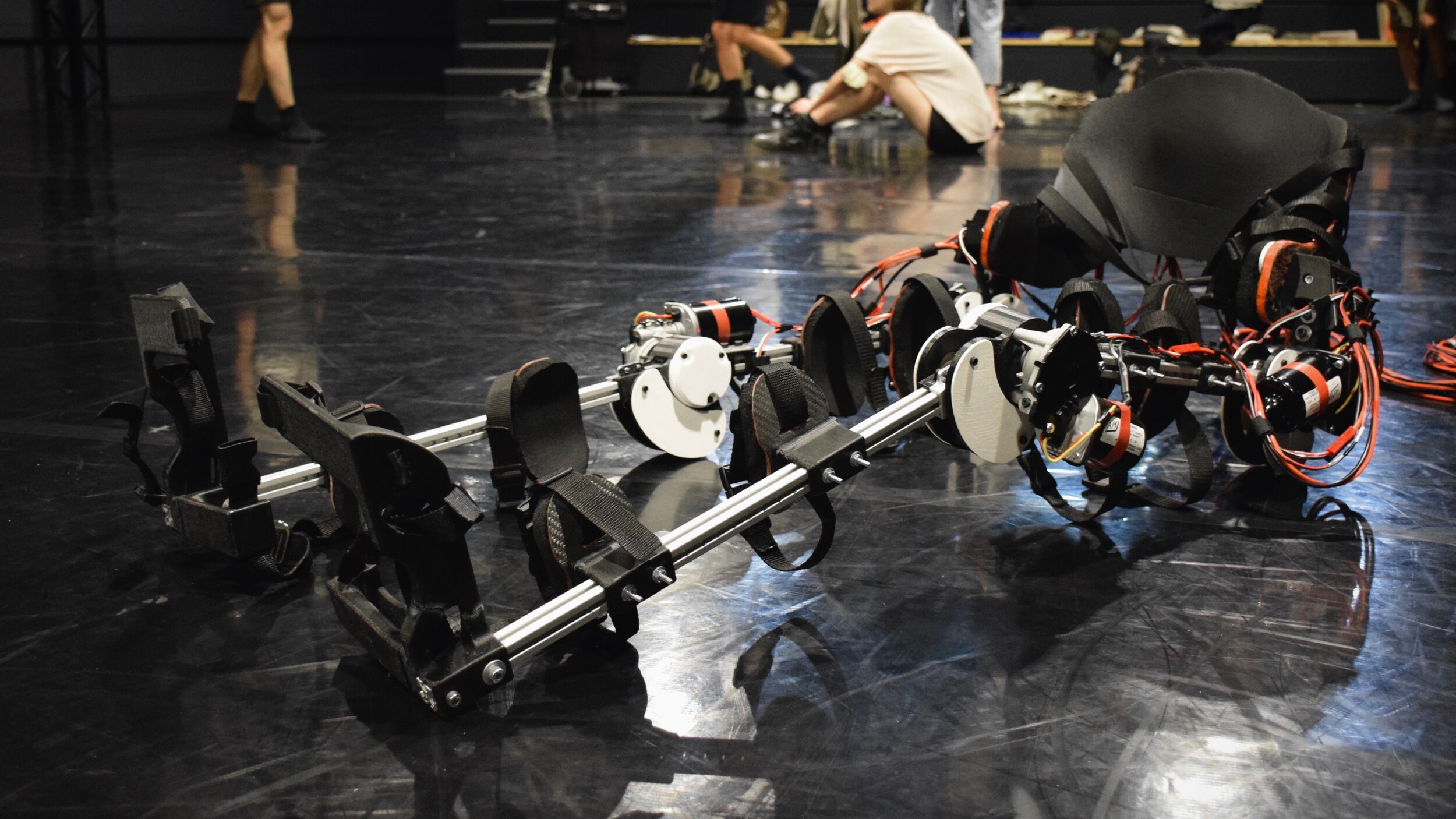
The L’Org Exoskeleton was developed for an exploratory project with CIE Shonen (Marseille,France) to push the boundaries of contemporary ballet using wearable machines overpowering, limiting, and pushing dancers’ bodies.
Work is still ongoing to find the best performance embodiment for this mixture of robotics and dance.
Media and technique :
L’Org Powered Exoskeleton
26Nm/12V DC Motors on Arduino over Metal, Plastic, and Carbon Fiber Structure
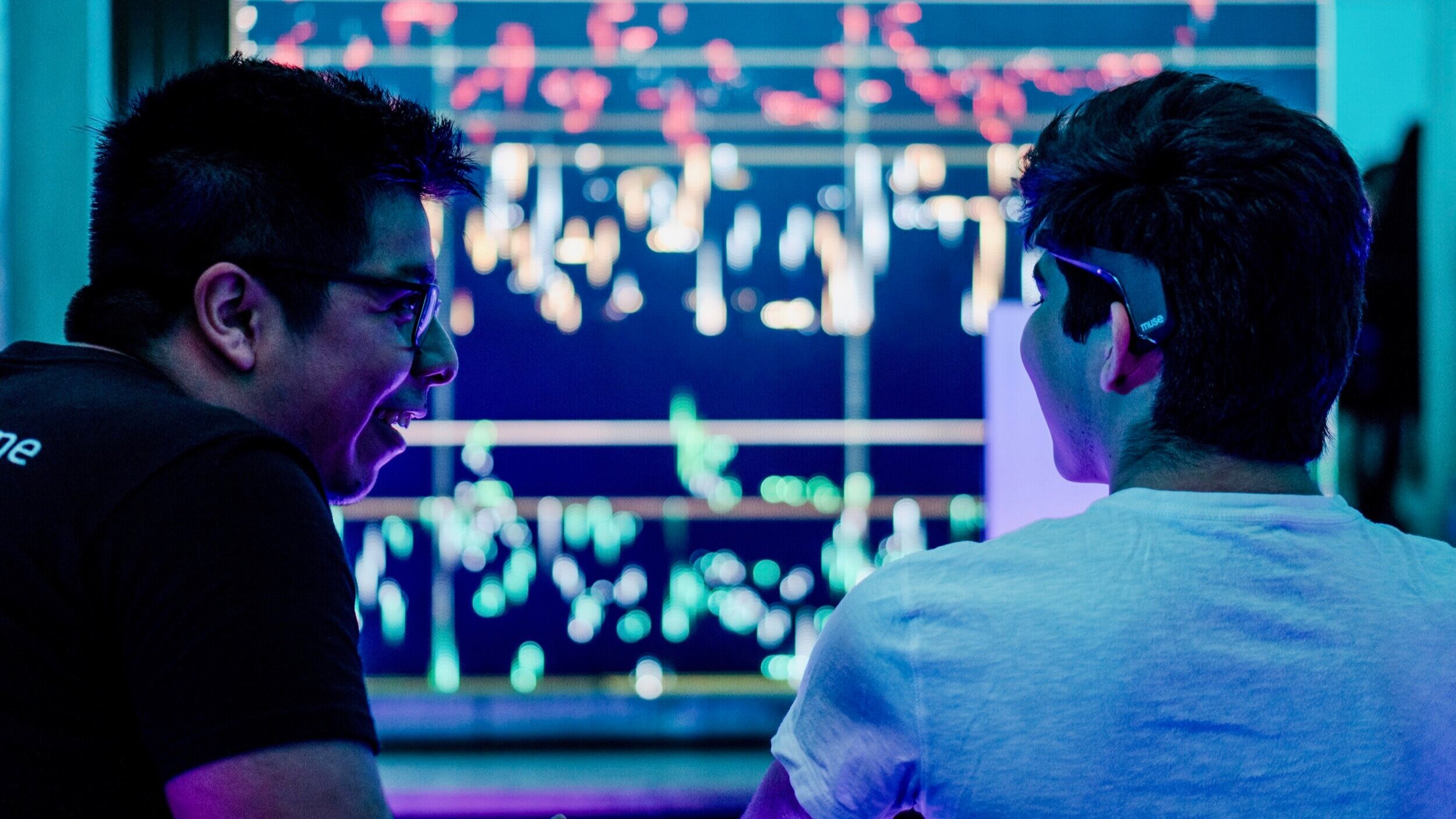
Museo de Arte Contemporáneo de Monterrey (MARCO) and INDI present an event conceptualized by Jesús Tamez-Duque and integrating brain machines designed and built by the studio.
Within this futuristic and creative night, visitors explore the chaos, the reactivities, and the controllable power of their own brains through installations based on the interactive use of << Máquinas Cerebrales 1-4 >> (INDI, 2019).
Media and technique :
Máquina Cerebral 1-4
DC Electronics on Arduino + Muse BCI on Pure Data

Museo de Arte Contemporáneo de Monterrey (MARCO) and INDI present an event conceptualized by Jesús Tamez-Duque and integrating brain machines designed and built by the studio.
Within this futuristic and creative night, visitors explore the chaos, the reactivities, and the controllable power of their own brains through installations based on the interactive use of << Máquinas Cerebrales 1-4 >> (INDI, 2019).
Media and technique :
Máquina Cerebral 1-4
DC Electronics on Arduino + Muse BCI on Pure Data

Museo de Arte Contemporáneo de Monterrey (MARCO) and INDI present an event conceptualized by Jesús Tamez-Duque and integrating brain machines designed and built by the studio.
Within this futuristic and creative night, visitors explore the chaos, the reactivities, and the controllable power of their own brains through installations based on the interactive use of << Máquinas Cerebrales 1-4 >> (INDI, 2019).
Media and technique :
Máquina Cerebral 1-4
DC Electronics on Arduino + Muse BCI on Pure Data
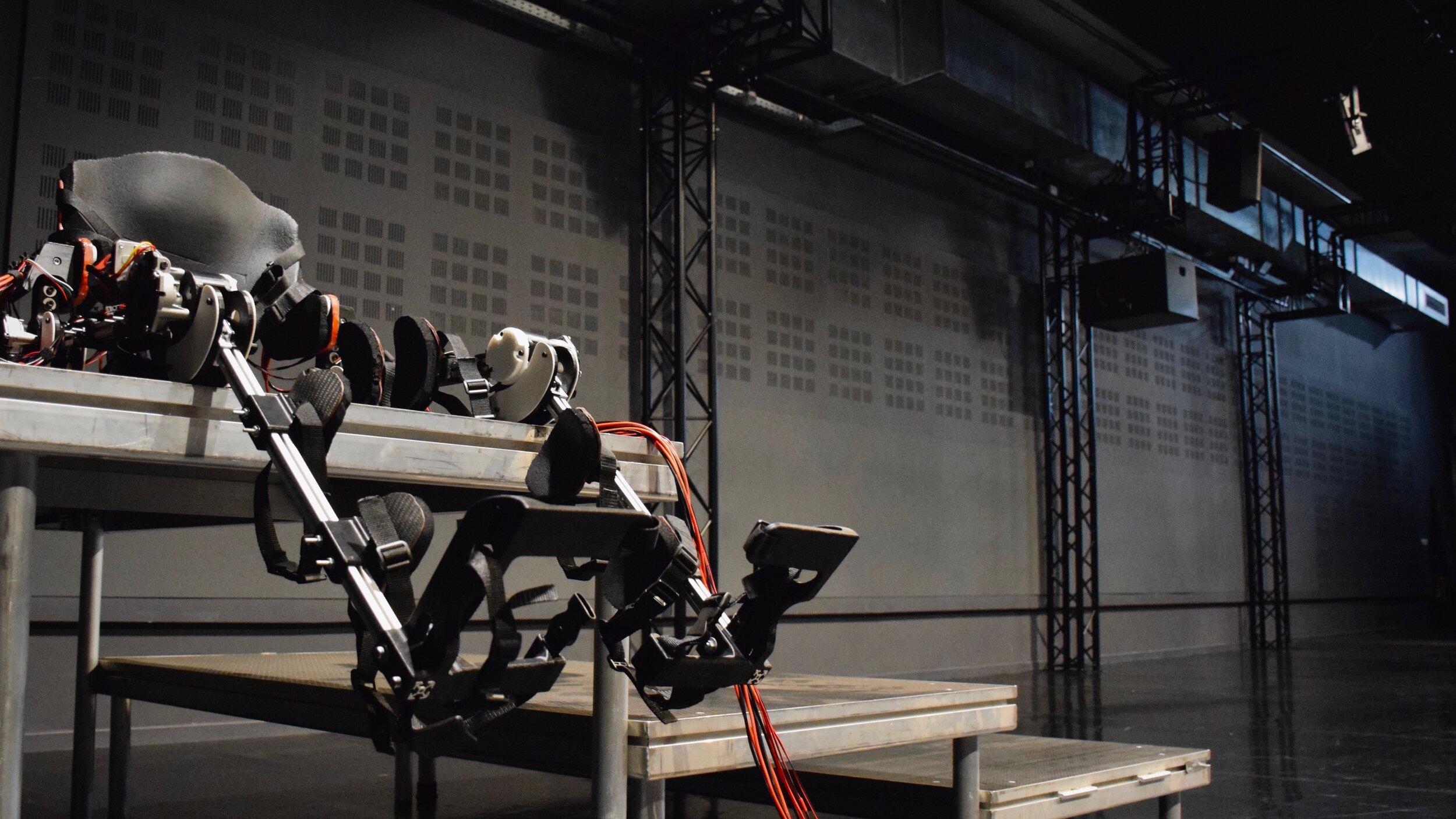
The L’Org Exoskeleton was developed for an exploratory project with CIE Shonen (Marseille,France) to push the boundaries of contemporary ballet using wearable machines overpowering, limiting, and pushing dancers’ bodies.
Work is still ongoing to find the best performance embodiment for this mixture of robotics and dance.
Media and technique :
L’Org Powered Exoskeleton
26Nm/12V DC Motors on Arduino over Metal, Plastic, and Carbon Fiber Structure
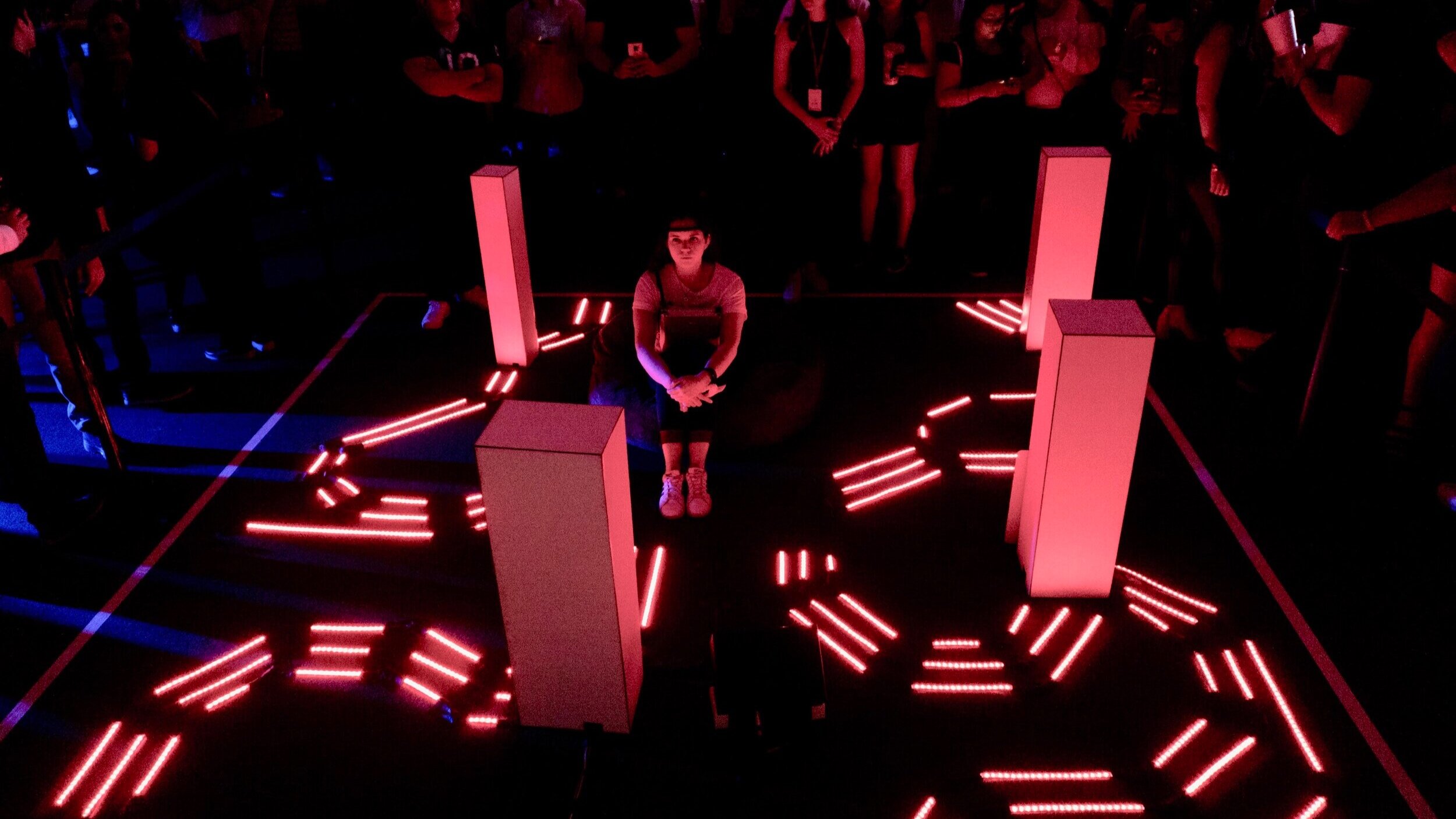
Museo de Arte Contemporáneo de Monterrey (MARCO) and INDI present an event conceptualized by Jesús Tamez-Duque and integrating brain machines designed and built by the studio.
Within this futuristic and creative night, visitors explore the chaos, the reactivities, and the controllable power of their own brains through installations based on the interactive use of << Máquinas Cerebrales 1-4 >> (INDI, 2019).
Media and technique :
Máquina Cerebral 1-4
DC Electronics on Arduino + Muse BCI on Pure Data

Through allowing visiting children with disabilities to perform apparently-ephemeral robotic walks, Jesús Tamez-Duque questions the focus and role of technology development, exploring the significance of simple events.
Leaving their wheelchairs and coming together with the ALICE to stand up and walk for the first time, youngsters and long-awaiting families become part of the questioning and the statement.
Media and technique :
ALICE Powered Exoskeleton
26Nm/12V DC Motors on Arduino over Metal, Plastic, and Carbon Fiber Structure
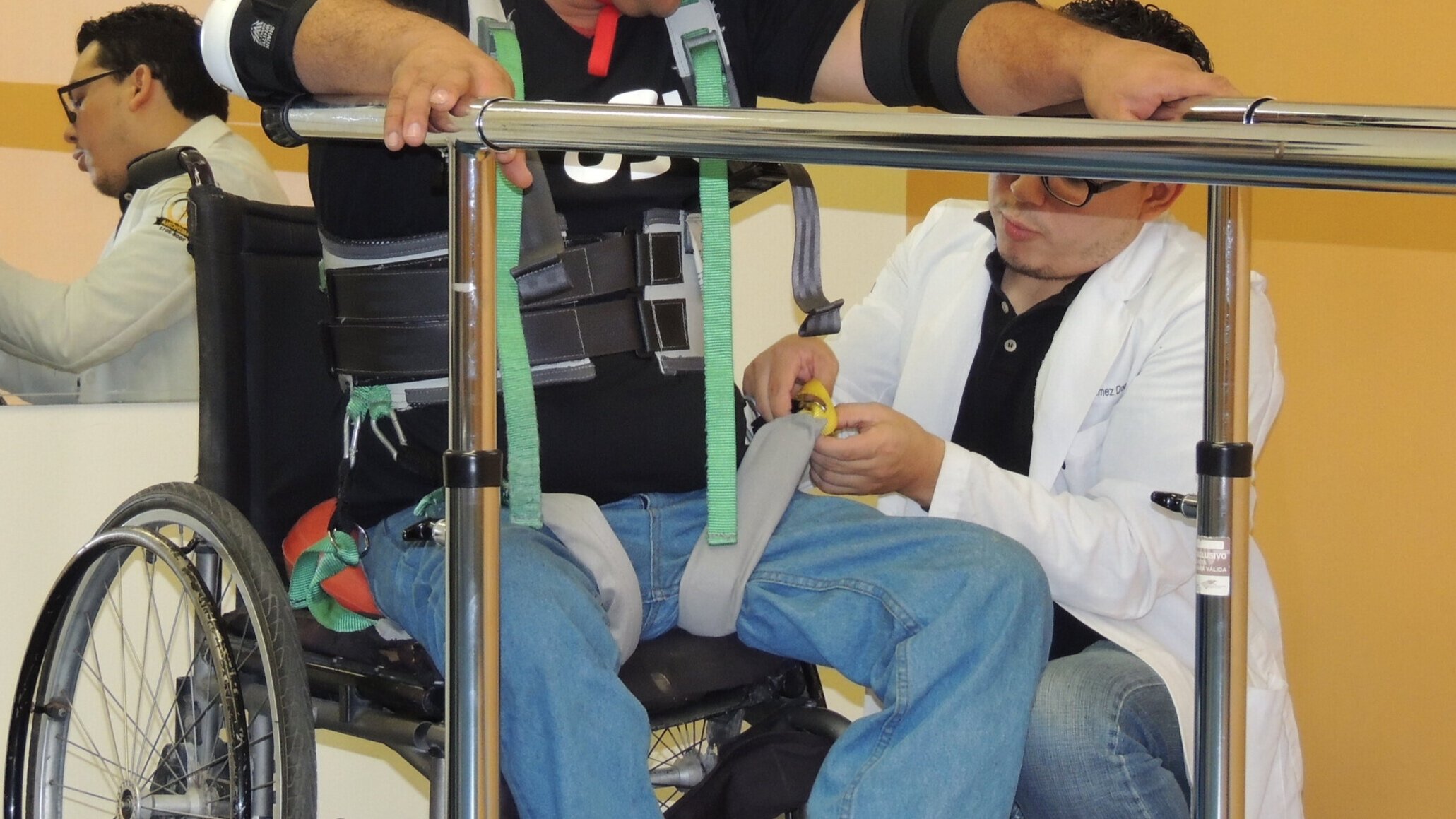
Following the growing importance of Exoskeleton Technology for Research, Health and Entrepreneurship, INDI was commissioned to develop, validate and clinically-test original prototypes with IP-protection potential.
Jesús Tamez-Duque’s designs focus on rethinking the development approach, strictly applying budget and material restrictions based on local-production principles for Latin America.
Commissioned by :
Tecnológico de Monterrey + WeaRobot
Intellectual property :
Tecnológico de Monterrey + INDI Ingeniería y Diseño (MX)

Following the growing importance of Exoskeleton Technology for Research, Health and Entrepreneurship, INDI was commissioned to develop, validate and clinically-test original prototypes with IP-protection potential.
Jesús Tamez-Duque’s designs focus on rethinking the development approach, strictly applying budget and material restrictions based on local-production principles for Latin America.
Commissioned by :
Tecnológico de Monterrey + WeaRobot
Intellectual property :
Tecnológico de Monterrey + INDI Ingeniería y Diseño (MX)
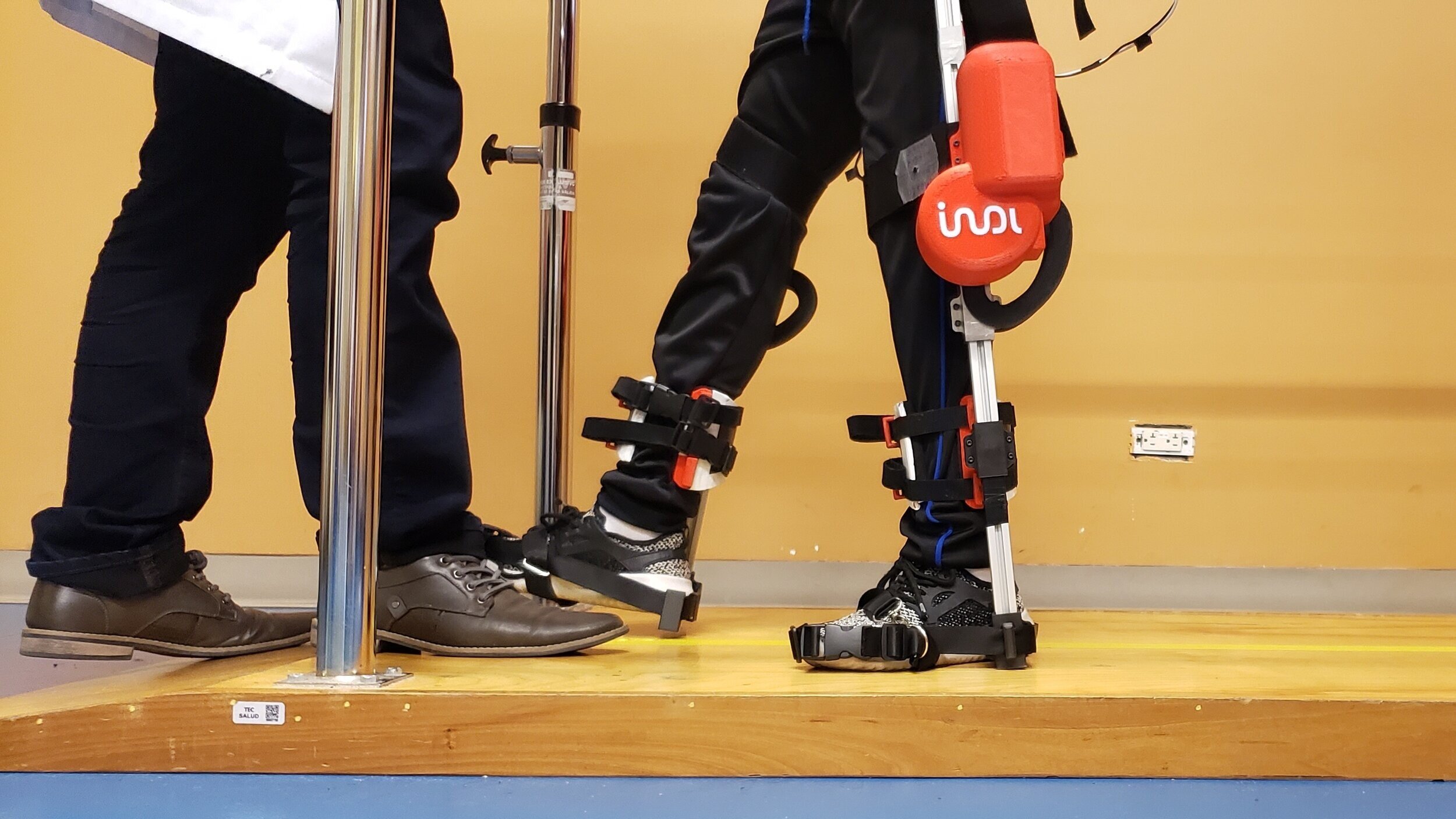
Through allowing visiting children with disabilities to perform apparently-ephemeral robotic walks, Jesús Tamez-Duque questions the focus and role of technology development, exploring the significance of simple events.
Leaving their wheelchairs and coming together with the ALICE to stand up and walk for the first time, youngsters and long-awaiting families become part of the questioning and the statement.
Media and technique :
ALICE Powered Exoskeleton
26Nm/12V DC Motors on Arduino over Metal, Plastic, and Carbon Fiber Structure
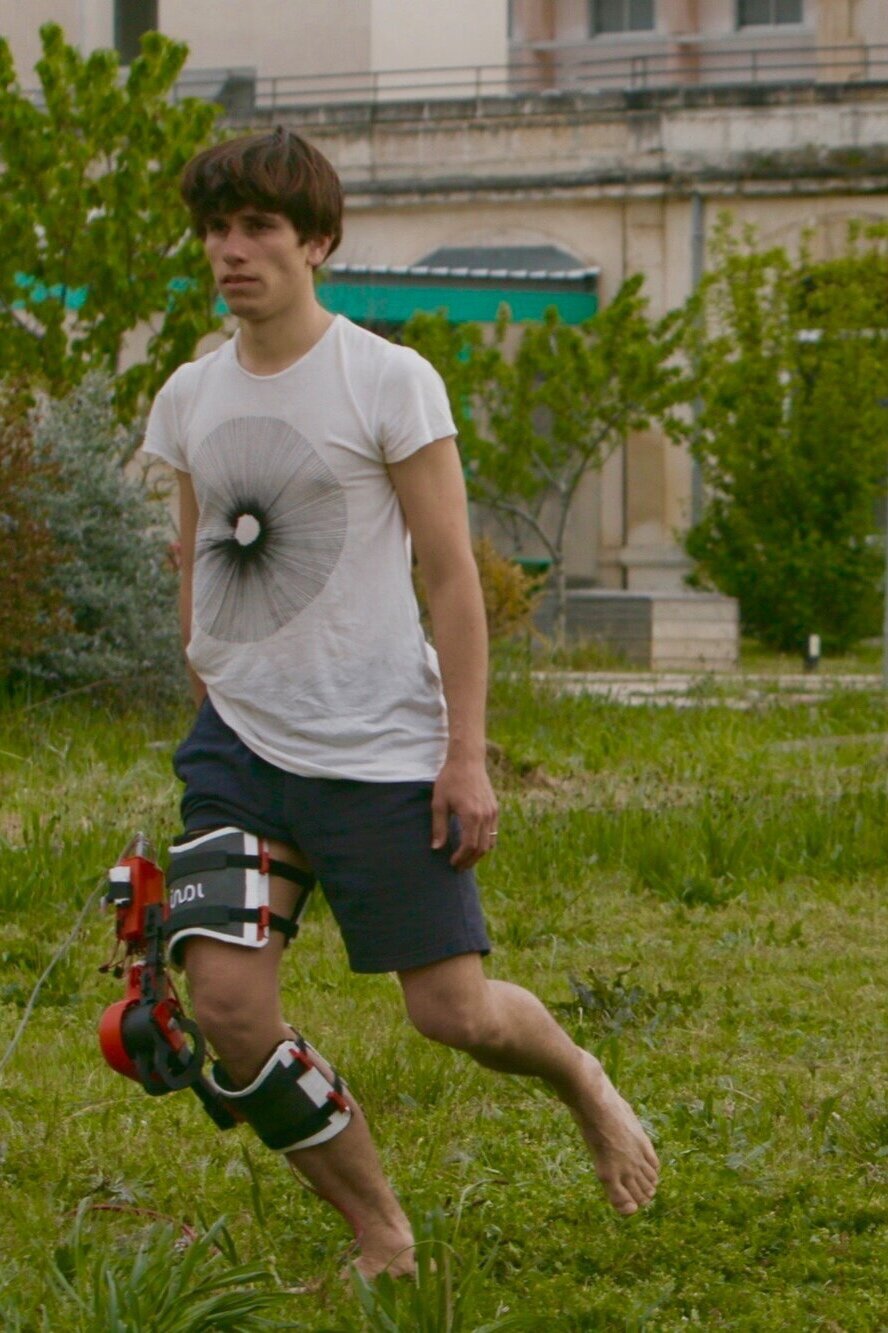
The L’Org Exoskeleton was developed for an exploratory project with CIE Shonen (Marseille,France) to push the boundaries of contemporary ballet using wearable machines overpowering, limiting, and pushing dancers’ bodies.
Work is still ongoing to find the best performance embodiment for this mixture of robotics and dance.
Media and technique :
Annie Powered Exoskeleton
26Nm/12V DC Motors on Arduino over Metal, Plastic, and Carbon Fiber Structure
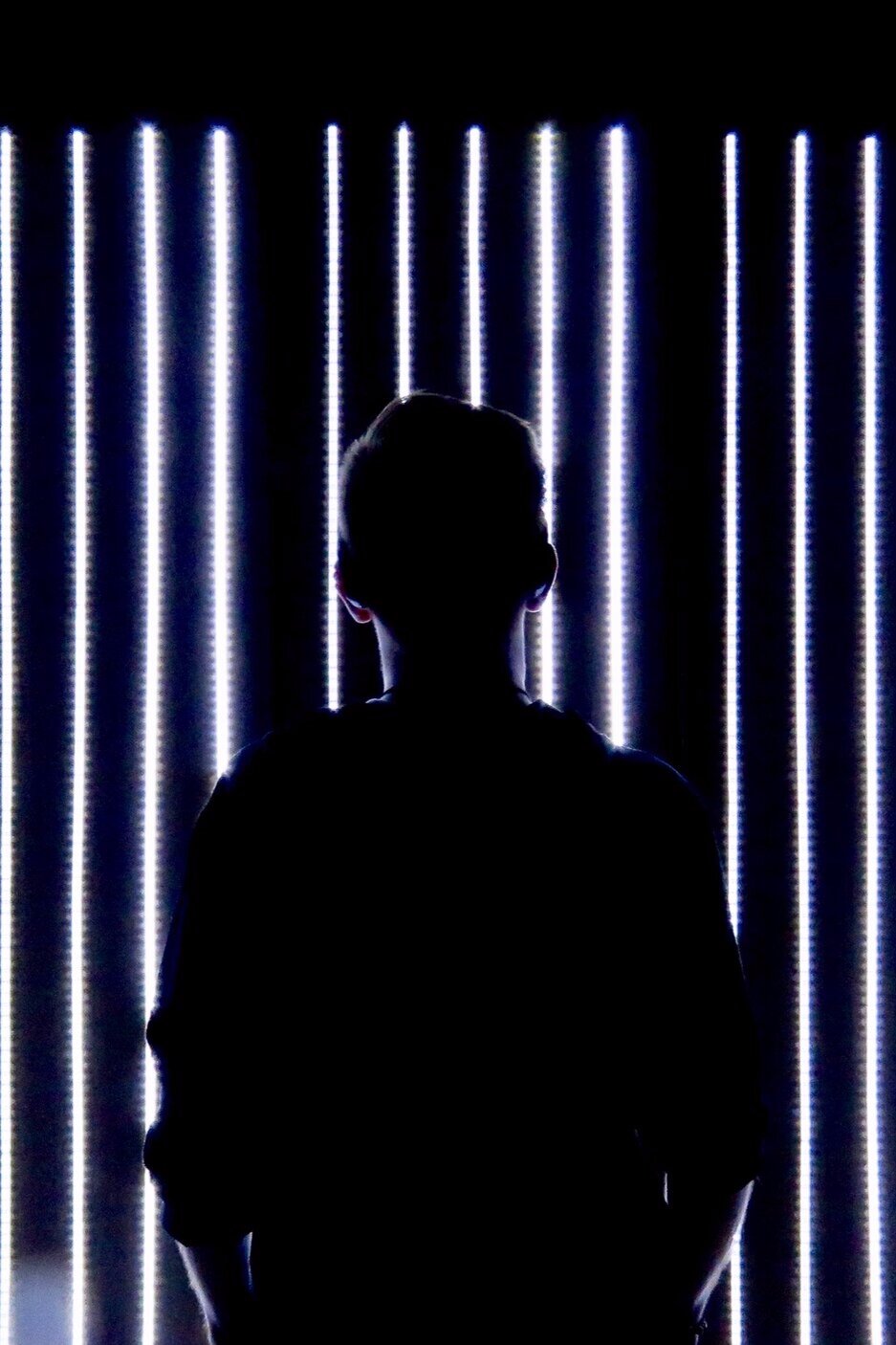
Integrating the studio’s << Máquina cerebral 4 >> Jesús Tamez-Duque and Société des Neurosciences presented an installation within which visitors are challenged to explore and question their ability to control their own thoughts.
In allowing a public and real-time comparison between visitors from varying disciplines, differences potentially existent at a neural level are evidenced, as well as doubts on their implications or meanings.
Disparities in academic upbringing, personality and even gender are brought to the spotlight through a seemingly innocent neural exercise.
Media and technique :
Máquina cerebral 4.
~80m of 12V + 20Amp DC LEDs over MDF Panels + Muse 1 MoBI on Pure Data.
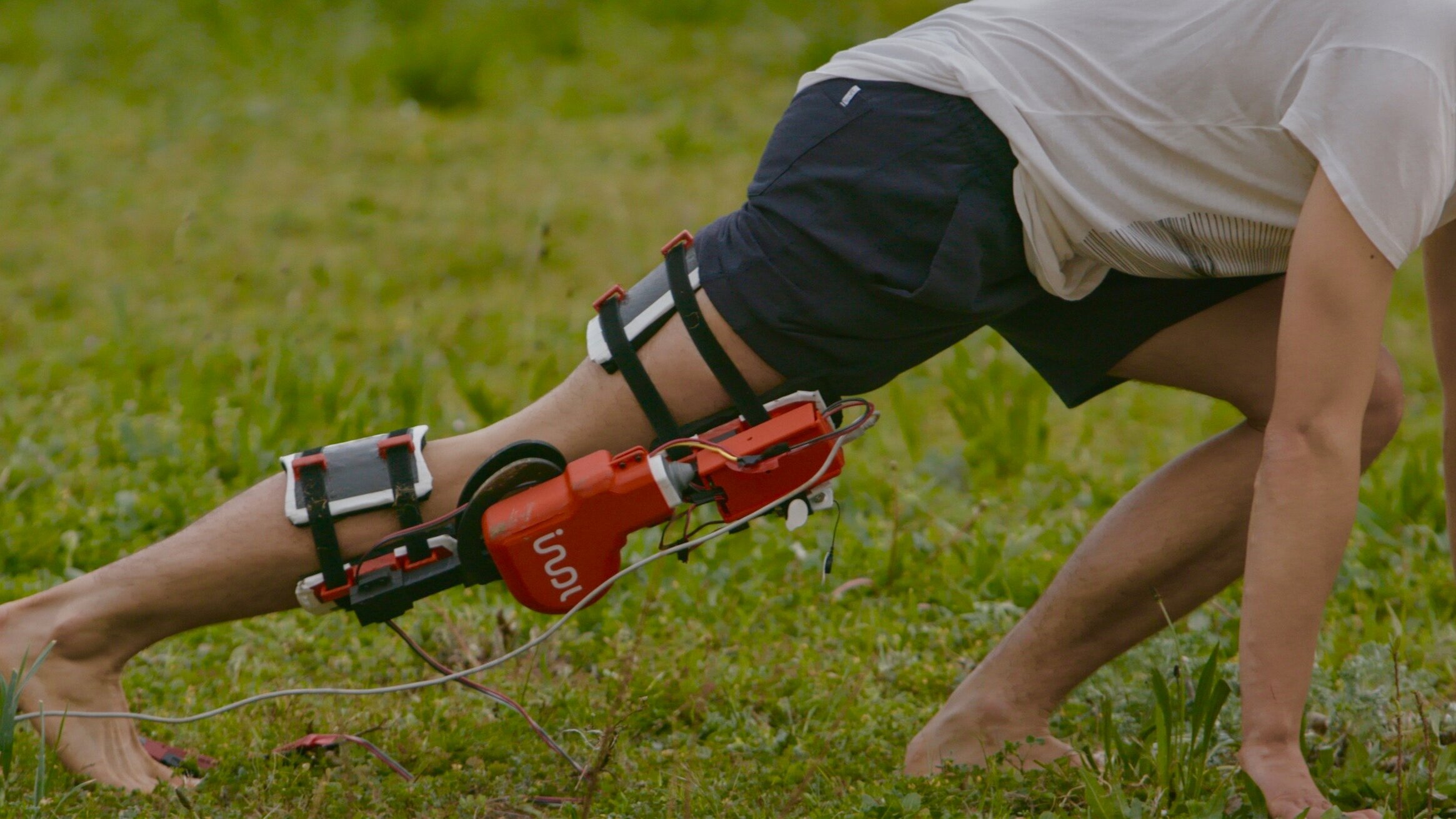
The L’Org Exoskeleton was developed for an exploratory project with CIE Shonen (Marseille,France) to push the boundaries of contemporary ballet using wearable machines overpowering, limiting, and pushing dancers’ bodies.
Work is still ongoing to find the best performance embodiment for this mixture of robotics and dance.
Media and technique :
Annie Powered Exoskeleton
26Nm/12V DC Motors on Arduino over Metal, Plastic, and Carbon Fiber Structure

The L’Org Exoskeleton was developed for an exploratory project with CIE Shonen (Marseille,France) to push the boundaries of contemporary ballet using wearable machines overpowering, limiting, and pushing dancers’ bodies.
Work is still ongoing to find the best performance embodiment for this mixture of robotics and dance.
Media and technique :
Annie Powered Exoskeleton
26Nm/12V DC Motors on Arduino over Metal, Plastic, and Carbon Fiber Structure

One of INDI’s earliest research commissions, the project called for a POC development of a novel injection alternative which would render the process (1) simple and (2) painless, while also (3) making needle reuse impossible.
Jesús Tamez-Duque’s and Alexandra Acosta-Cavazos’s design featured innovative mechanics tested up to TRL = 4.
Commissioned :
Tecnológico de Monterrey
Intellectual Property :
INDI Ingeniería y Diseño
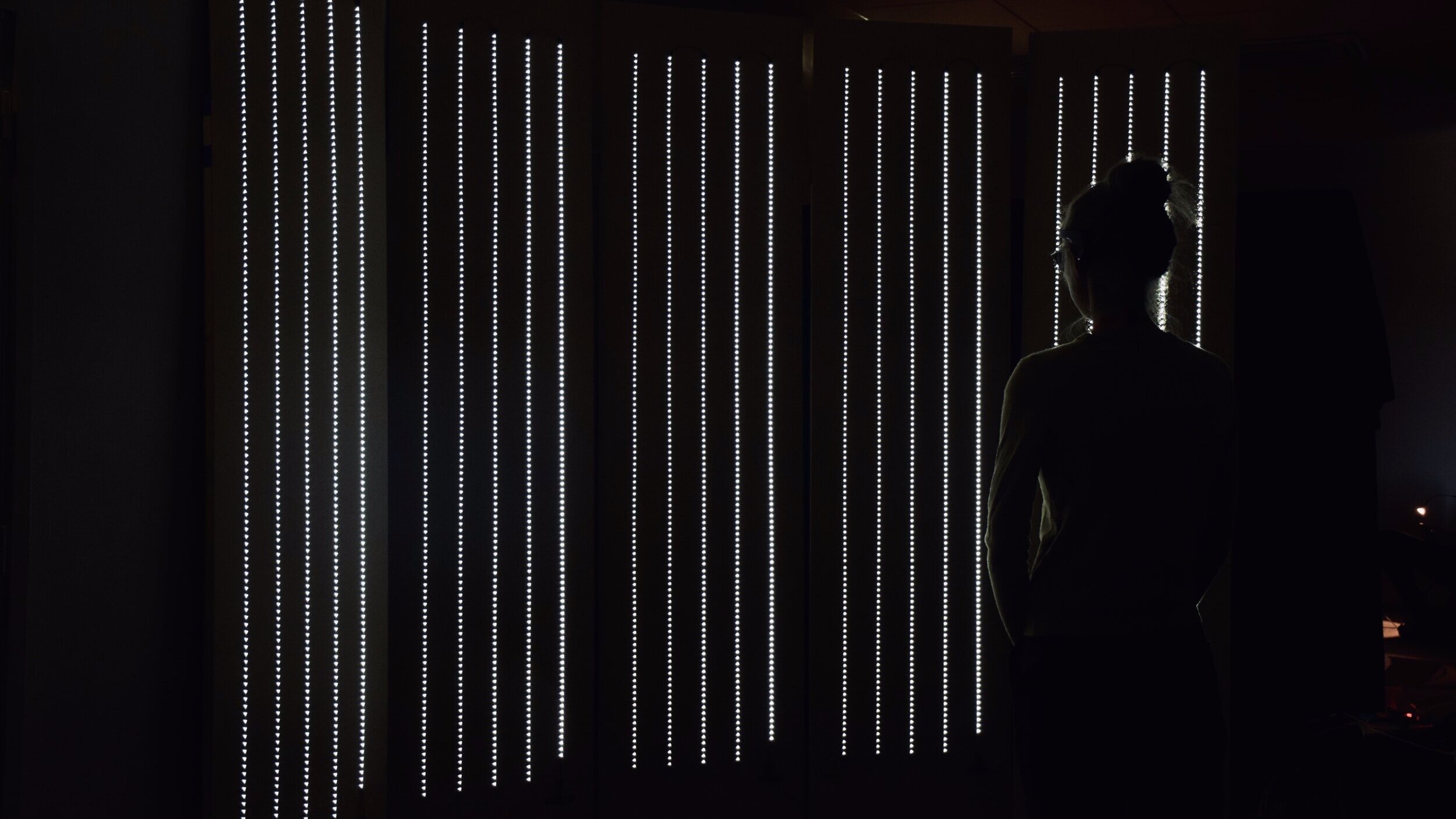
Integrating the studio’s << Máquina cerebral 4 >> Jesús Tamez-Duque and Société des Neurosciences presented an installation within which visitors are challenged to explore and question their ability to control their own thoughts.
In allowing a public and real-time comparison between visitors from varying disciplines, differences potentially existent at a neural level are evidenced, as well as doubts on their implications or meanings.
Disparities in academic upbringing, personality and even gender are brought to the spotlight through a seemingly innocent neural exercise.
Media and technique :
Máquina cerebral 4.
~80m of 12V + 20Amp DC LEDs over MDF Panels + Muse 1 MoBI on Pure Data.

Integrating the studio’s << Máquina cerebral 4 >> Jesús Tamez-Duque and Société des Neurosciences presented an installation within which visitors are challenged to explore and question their ability to control their own thoughts.
In allowing a public and real-time comparison between visitors from varying disciplines, differences potentially existent at a neural level are evidenced, as well as doubts on their implications or meanings.
Disparities in academic upbringing, personality and even gender are brought to the spotlight through a seemingly innocent neural exercise.
Media and technique :
Máquina cerebral 4.
~80m of 12V + 20Amp DC LEDs over MDF Panels + Muse 1 MoBI on Pure Data.

Jesús Tamez-Duque and Museo MARCO (Monterrey) presented an installation which took unexpecting visitors through an explorative journey where neural connections to artistic elements were collected and immortalized, in an effort to find meaningful and unique reactions to art and the museum. Through their participation, visitors become part of a potentially-cold questioning of the intimate connections generated by art, and of the role of the museum.
Media and technique :
Muse 1 Headband + gTec Nautilus proprietary MoBIs on MatLab Statistics and Machine Learning Toolkits.

Jesús Tamez-Duque and Museo MARCO (Monterrey) presented an installation which took unexpecting visitors through an explorative journey where neural connections to artistic elements were collected and immortalized, in an effort to find meaningful and unique reactions to art and the museum. Through their participation, visitors become part of a potentially-cold questioning of the intimate connections generated by art, and of the role of the museum.
Media and technique :
Muse 1 Headband + gTec Nautilus proprietary MoBIs on MatLab Statistics and Machine Learning Toolkits.
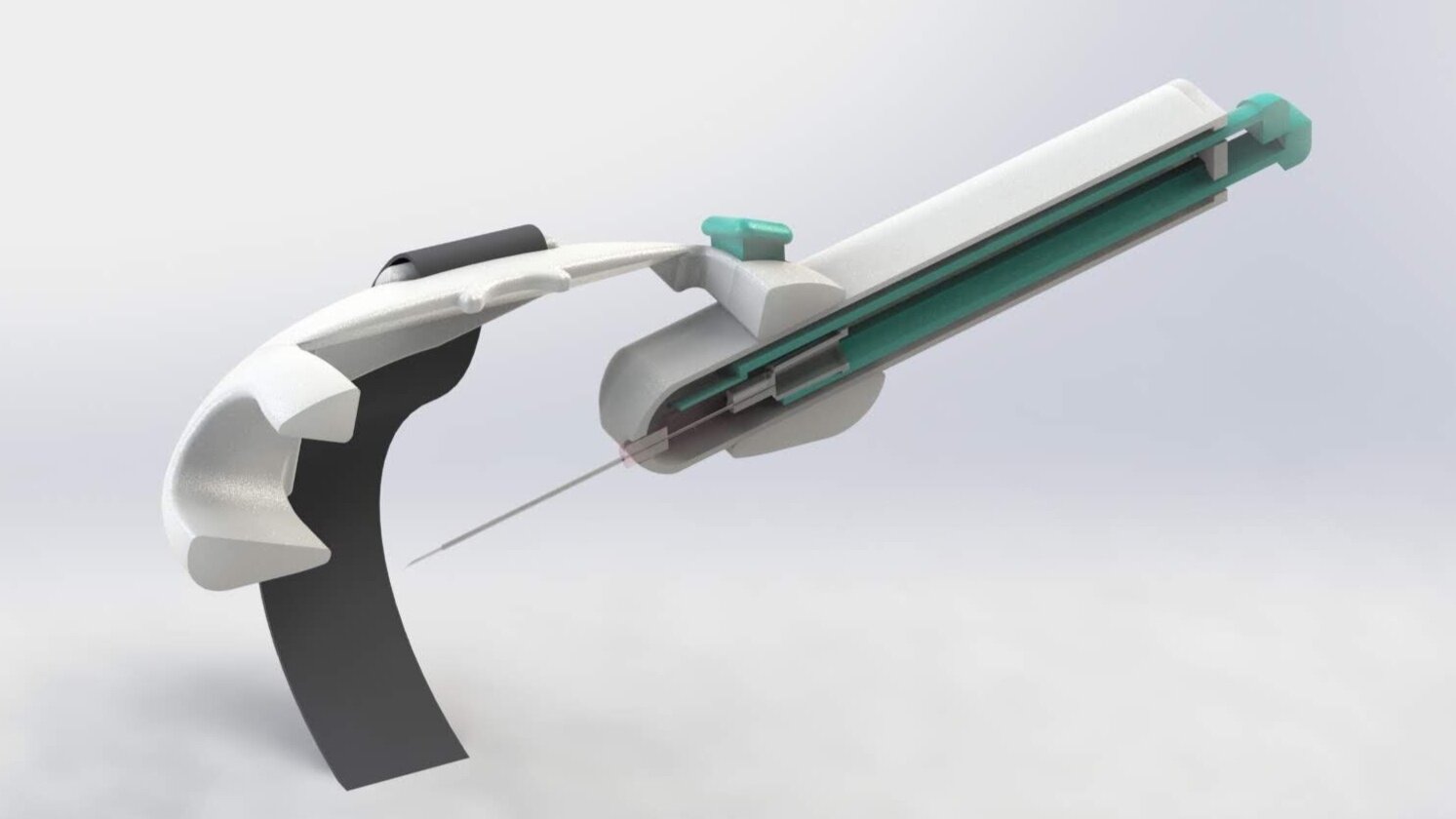
One of INDI’s earliest research commissions, the project called for a POC development of a novel injection alternative which would render the process (1) simple and (2) painless, while also (3) making needle reuse impossible.
Jesús Tamez-Duque’s and Alexandra Acosta-Cavazos’s design featured innovative mechanics tested up to TRL = 4.
Commissioned :
Tecnológico de Monterrey
Intellectual Property :
INDI Ingeniería y Diseño
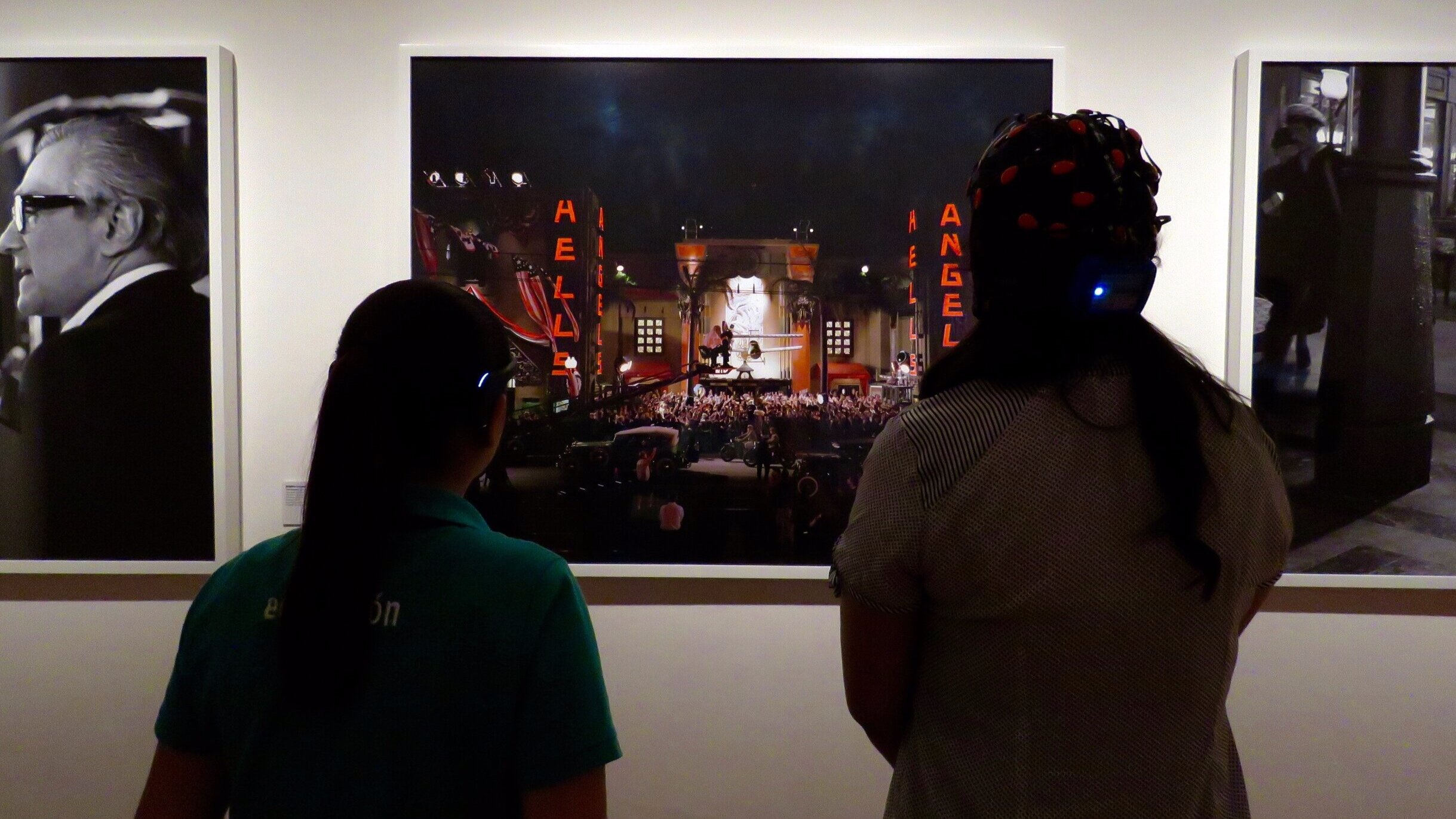
Jesús Tamez-Duque and Museo MARCO (Monterrey) presented an installation which took unexpecting visitors through an explorative journey where neural connections to artistic elements were collected and immortalized, in an effort to find meaningful and unique reactions to art and the museum. Through their participation, visitors become part of a potentially-cold questioning of the intimate connections generated by art, and of the role of the museum.
Media and technique :
Muse 1 Headband + gTec Nautilus proprietary MoBIs on MatLab Statistics and Machine Learning Toolkits.
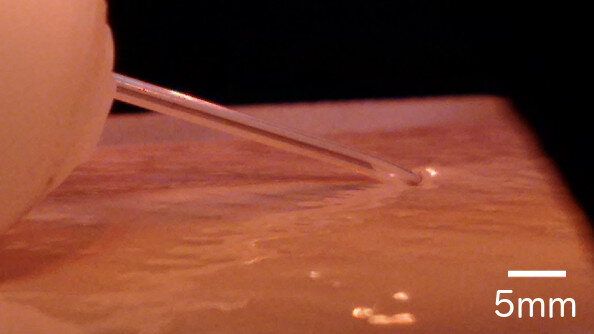
One of INDI’s early research commissions, the project called for a POC development of a novel injection alternative which would render the process (1) simple and (2) painless, while also (3) making needle reuse impossible.
Jesús Tamez-Duque’s and Alexandra Acosta-Cavazos’s design featured innovative mechanics tested up to TRL = 4.
Commissioned :
Tecnológico de Monterrey
Intellectual Property :
INDI Ingeniería y Diseño
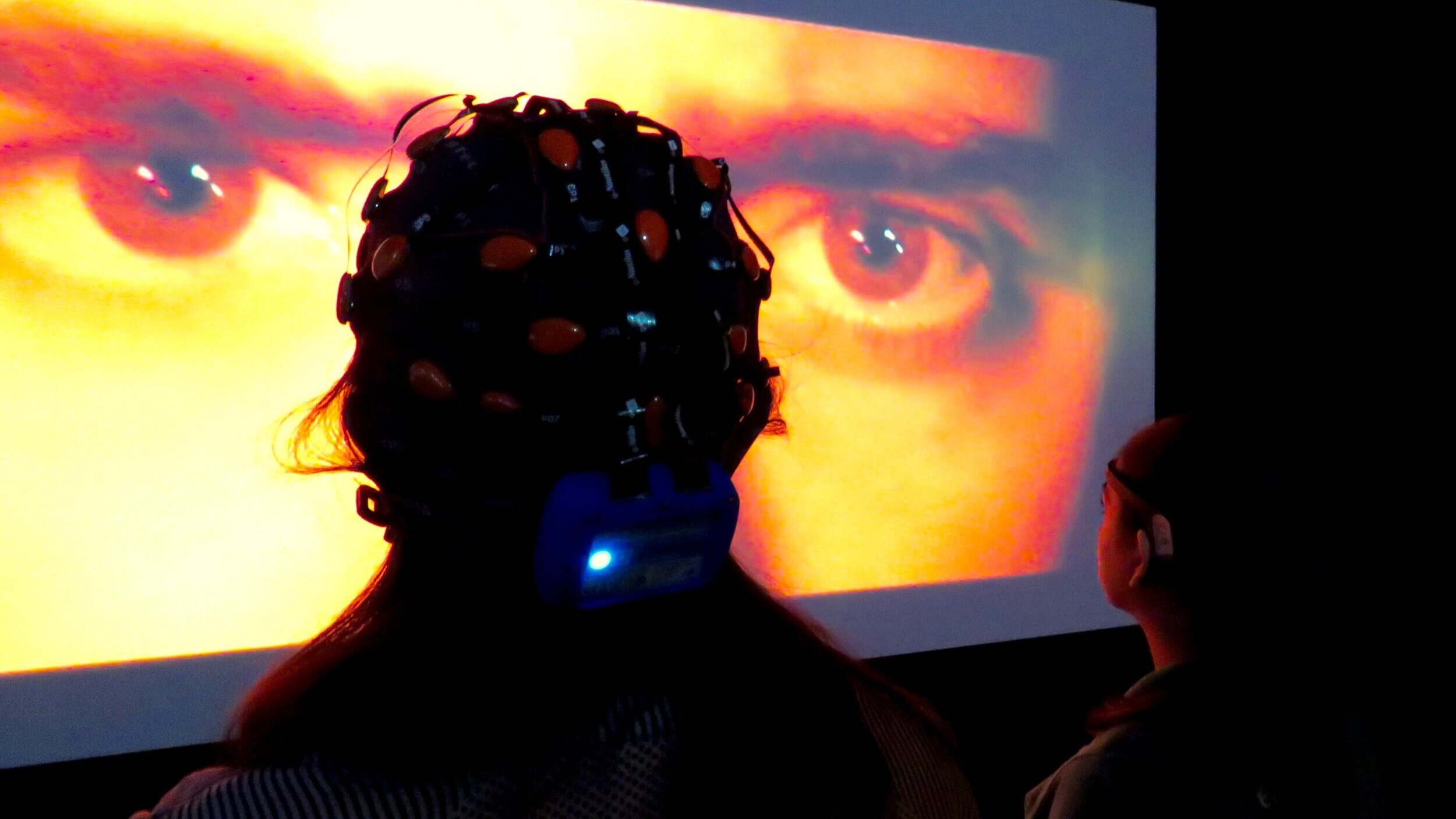
Jesús Tamez-Duque and Museo MARCO (Monterrey) presented an installation which took unexpecting visitors through an explorative journey where neural connections to artistic elements were collected and immortalized, in an effort to find meaningful and unique reactions to art and the museum. Through their participation, visitors become part of a potentially-cold questioning of the intimate connections generated by art, and of the role of the museum.
Media and technique :
Muse 1 Headband + gTec Nautilus proprietary MoBIs on MatLab Statistics and Machine Learning Toolkits.
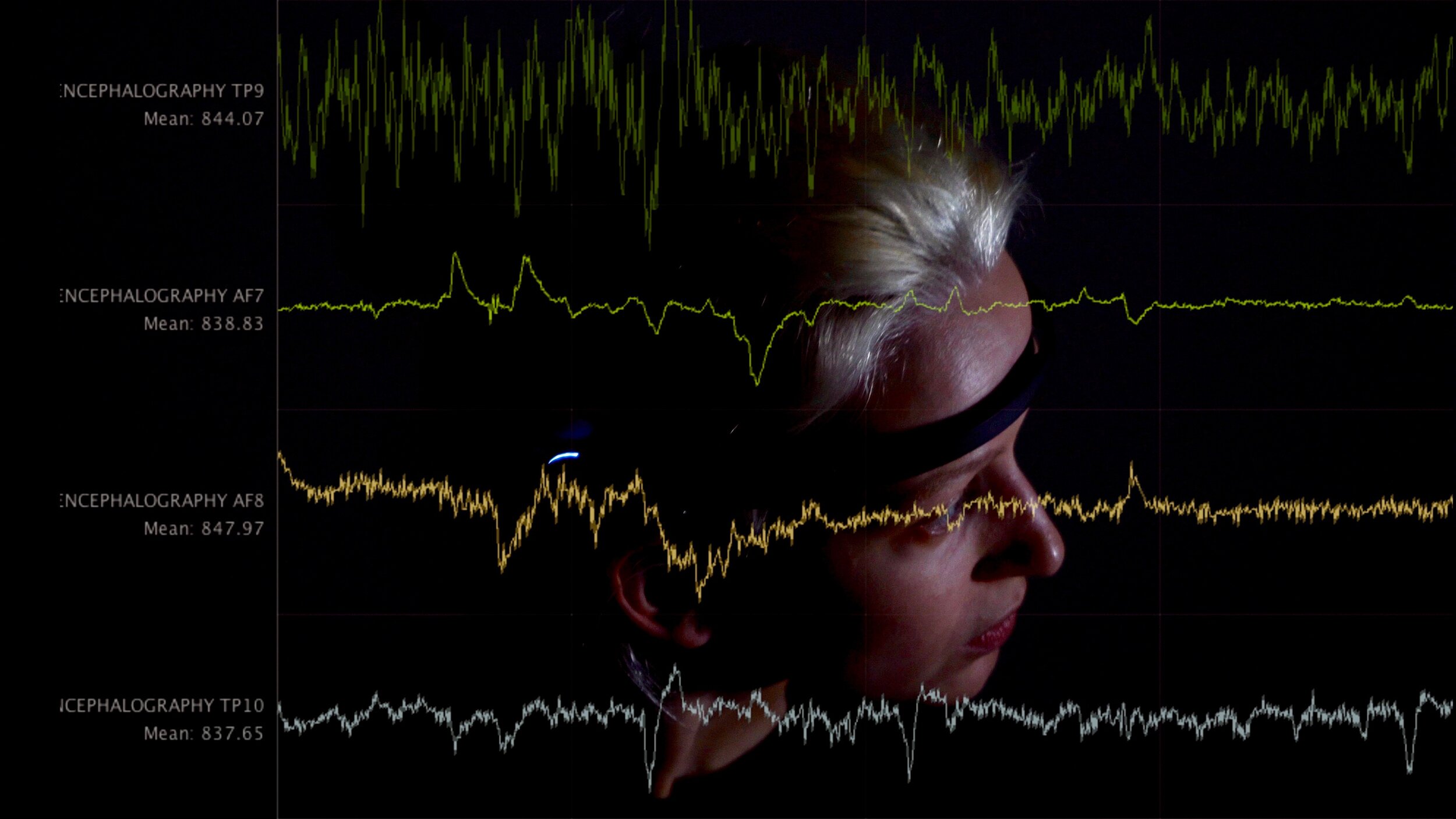
Eleni Xynogala, Myroslava Kuts and Jesús Tamez-Duque created this performance piece as an initial exploration of the expressive and poetic potential of the fusion between body, brain, artificial intelligence, and real-time projection.
Through a choreography which consists of reactions to algorithm-generated phrases based on << La République de Platon >>, morphing surfaces come to life in a translation of the neural behavior of the performer.
Media and technique :
Muse 1 Headband on Touch Designer.

Having created and showed their original << Neuro Science Fiction >> play dealing on the existance of human consciousness beyond the physical realm, Cristina Alanís and Emanuel Anguiano commissioned INDI to build in additional layers of narrative complexity through the use of actual Brain Technologies.
Along the span of 20+ presentations, a compendium of “digital consciousness fingerprints” was created as visitors pondered the possibility of existance beyond their bodies; something which might very well result from such records.
Commissioned by :
REAP Films + La Jaula del Conejo
Intellectual property :
Cristina Alanís + Emanuel Anguiano
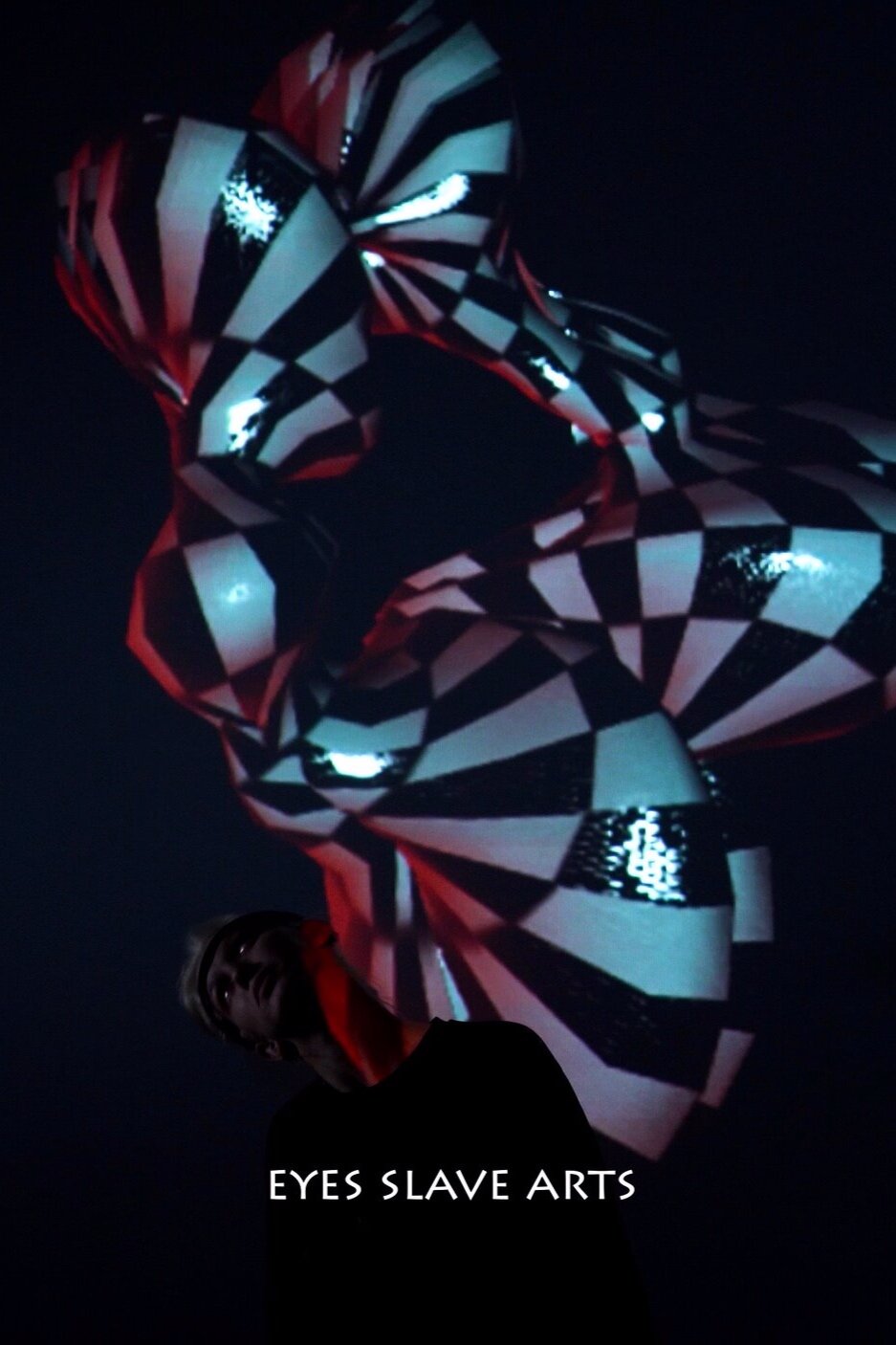
Eleni Xynogala, Myroslava Kuts and Jesús Tamez-Duque created this performance piece as an initial exploration of the expressive and poetic potential of the fusion between body, brain, artificial intelligence, and real-time projection.
Through a choreography which consists of reactions to algorithm-generated phrases based on << La République de Platon >>, morphing surfaces come to life in a translation of the neural behavior of the performer.
Media and technique :
Muse 1 Headband on Touch Designer.
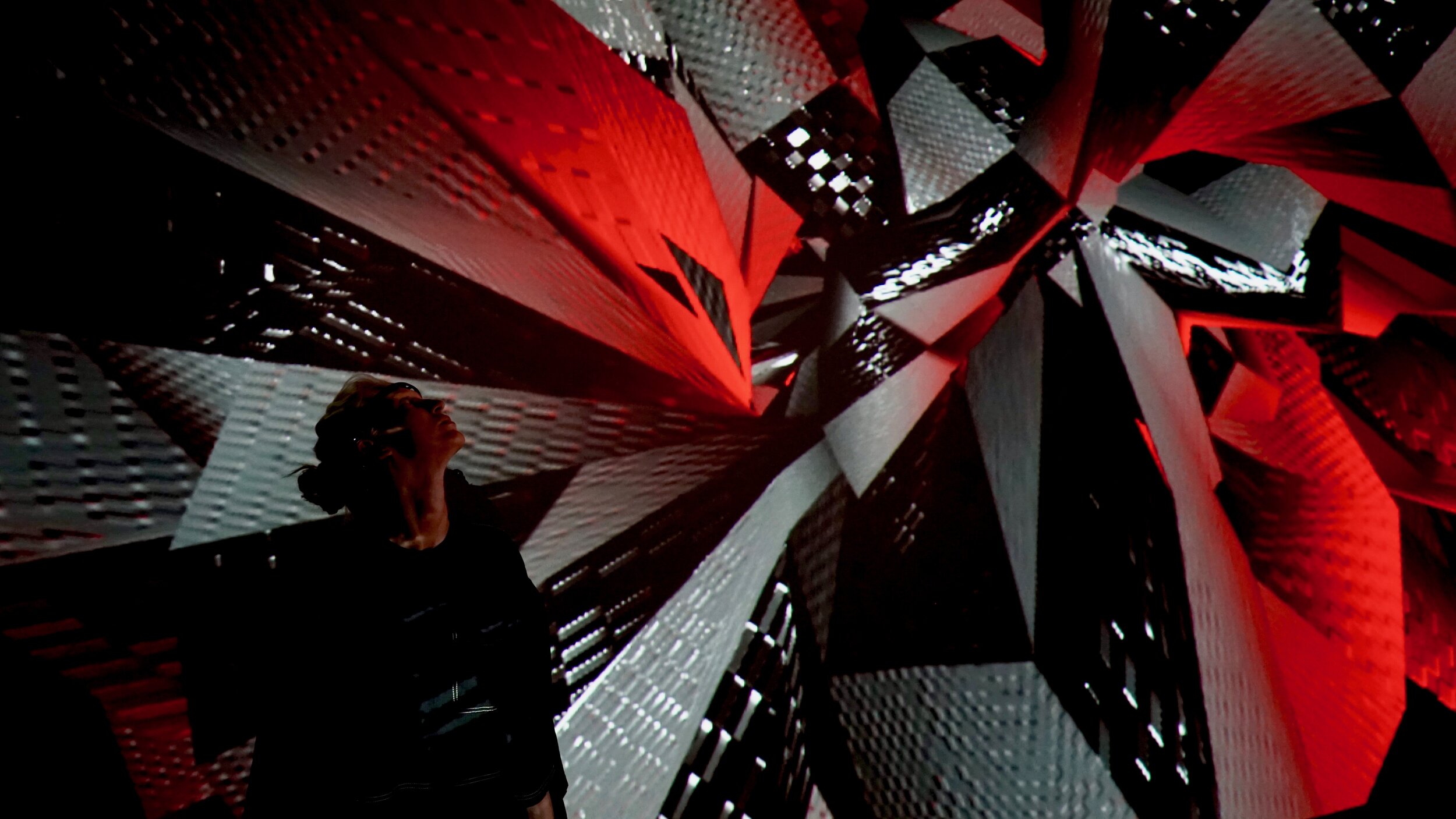
Eleni Xynogala, Myroslava Kuts and Jesús Tamez-Duque created this performance piece as an initial exploration of the expressive and poetic potential of the fusion between body, brain, artificial intelligence, and real-time projection.
Through a choreography which consists of reactions to algorithm-generated phrases based on << La République de Platon >>, morphing surfaces come to life in a translation of the neural behavior of the performer.
Media and technique :
Muse 1 Headband on Touch Designer.
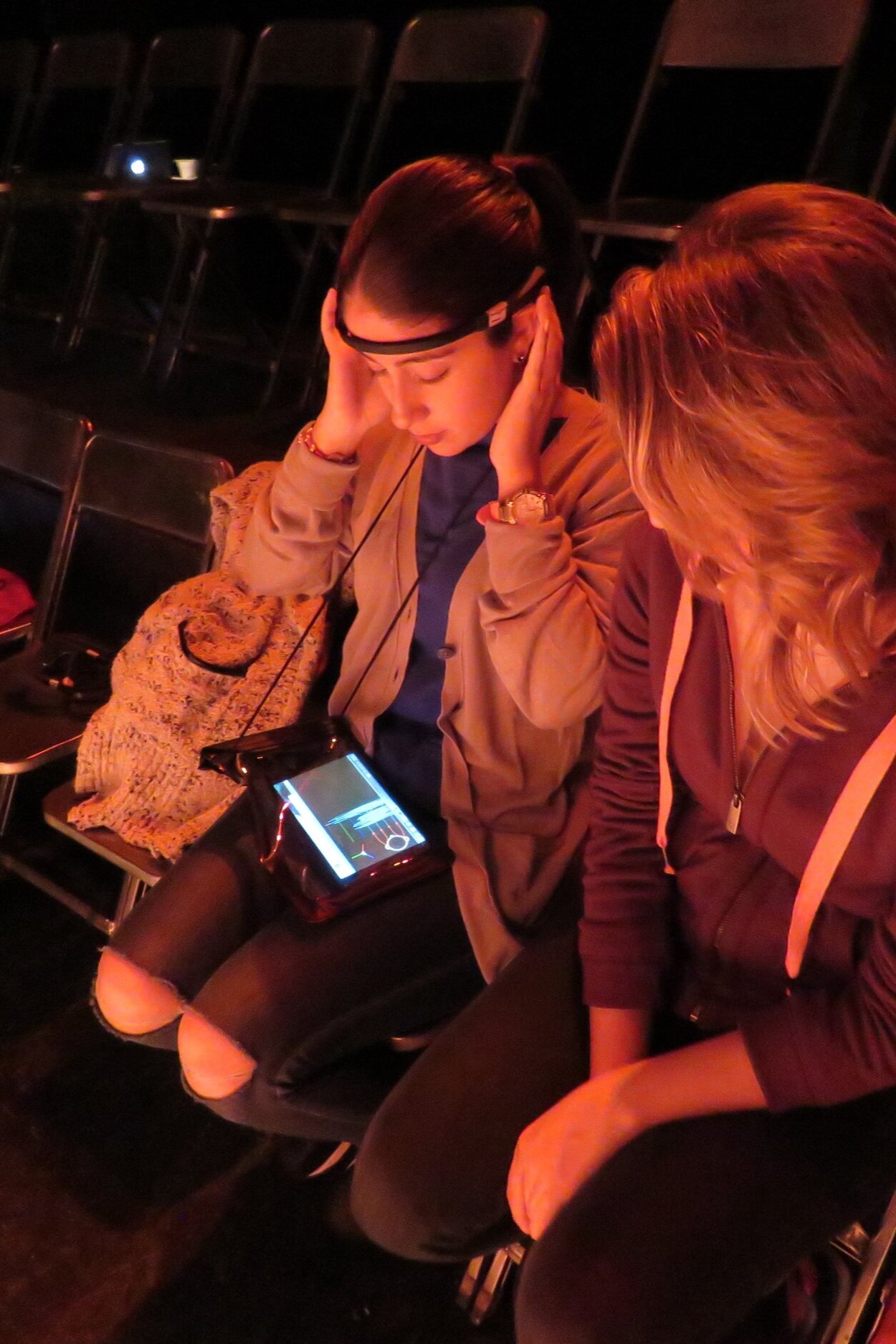
Having created and showed their original << Neuro Science Fiction >> play dealing on the existance of human consciousness beyond the physical realm, Cristina Alanís and Emanuel Anguiano commissioned INDI to build in additional layers of narrative complexity through the use of actual Brain Technologies.
Along the span of 20+ presentations, a compendium of “digital consciousness fingerprints” was created as visitors pondered the possibility of existance beyond their bodies; something which might very well result from such records.
Commissioned by :
REAP Films + La Jaula del Conejo
Intellectual property :
Cristina Alanís + Emanuel Anguiano
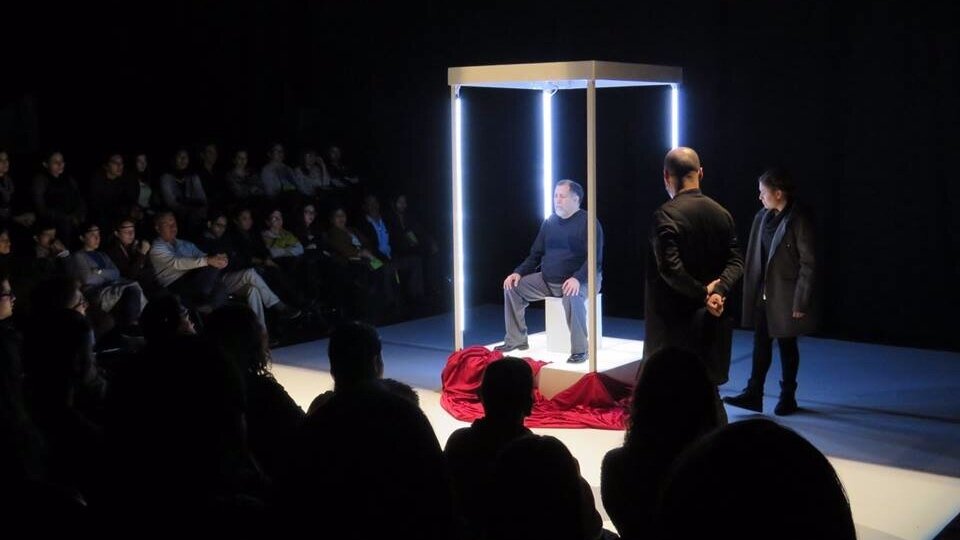
Having created and showed their original << Neuro Science Fiction >> play dealing on the existance of human consciousness beyond the physical realm, Cristina Alanís and Emanuel Anguiano commissioned INDI to build in additional layers of narrative complexity through the use of actual Brain Technologies.
Along the span of 20+ presentations, a compendium of “digital consciousness fingerprints” was created as visitors pondered the possibility of existance beyond their bodies; something which might very well result from such records.
Commissioned by :
REAP Films + La Jaula del Conejo
Intellectual property :
Cristina Alanís + Emanuel Anguiano























































This Interactive Visual Installation was commissioned to INDI with the focus of enhancing research in the areas of psychology and linguistics; to facilitate the exploration of the connections between the behavior of body metrics such as heartbeat and blood pressure with emotions such as fear and love.
3D Visuals run on Touch Designer and react in real-time to study subjects using multiple sensors worn on their heads and hands as well as around them.
Commissioned by :
Digital Humanities Research Group at UNAM and Tec de Monterrey
This Interactive Visual Installation was commissioned to INDI with the focus of enhancing research in the areas of psychology and linguistics; to facilitate the exploration of the connections between the behavior of body metrics such as heartbeat and blood pressure with emotions such as fear and love.
3D Visuals run on Touch Designer and react in real-time to study subjects using multiple sensors worn on their heads and hands as well as around them.
Commissioned by :
Digital Humanities Research Group at UNAM and Tec de Monterrey
Tec de Monterrey University and Professor Manuel Macías commissioned INDI on a one-year Business Development project to undergo market adaptation of their Original-IP Remote Laboratory Technology with a focus on accessing the Chinese market.
On-Site activities allowed for Strategic Product Development and Practical Business Development Guidelines to be developed for the project and for replication by other projects supported by the Univerity's International Center.
Commissioned by :
Tec Hub + Mexico-China Center China
Laiboyan China
Intellectual Property :
Tec de Monterrey Mexico Laiboyan Mexico
Following her research on the effects of light on behavioral patterns of children with autism, Professor Nadia Merad Coliac commissioned INDI to design and develop artificial replicas of her bioluminiscent bacteria - which she grows, feeds, and presents in laboratory-sample Petri Dishes.
An original electronic system and an initial batch of LUXAUT Lights focused on matching the specific Light-Wavelength of her bacteria were developed for clinical experimentation to be undergone during 2024, for scientific publication shortly after.
Commissioned by :
Nadia Merad Coliac
Institut de Neurophysiopathologie @ Université d'Aix-Marseille
Capsule d'Art France
Tec de Monterrey University and Professor Manuel Macías commissioned INDI on a one-year Business Development project to undergo market adaptation of their Original-IP Remote Laboratory Technology with a focus on accessing the Chinese market.
On-Site activities allowed for Strategic Product Development and Practical Business Development Guidelines to be developed for the project and for replication by other projects supported by the Univerity's International Center.
Commissioned by :
Tec Hub + Mexico-China Center China
Laiboyan China
Intellectual Property :
Tec de Monterrey Mexico
Laiboyan Mexico
Following her research on the effects of light on behavioral patterns of children with autism, Professor Nadia Merad Coliac commissioned INDI to design and develop artificial replicas of her bioluminiscent bacteria - which she grows, feeds, and presents in laboratory-sample Petri Dishes.
An original electronic system and an initial batch of LUXAUT Lights focused on matching the specific Light-Wavelength of her bacteria were developed for clinical experimentation to be undergone during 2024, for scientific publication shortly after.
Commissioned by :
Nadia Merad Coliac
Institut de Neurophysiopathologie @ Université d'Aix-Marseille
Capsule d'Art France
Équipés d'un casque EEG (Électroencéphalographie), permettant de mesurer l'activité électrique du cerveau, les visiteurs découvrent leur activité neuronale face aux œuvres analysées en temps réel puis retranscrite en onde lumineuses et sonores, créant ainsi une œuvre artistique éphémère.
Commissioned by :
Musée Granet and Arts Vivants Aix
Équipés d'un casque EEG (Électroencéphalographie), permettant de mesurer l'activité électrique du cerveau, les visiteurs découvrent leur activité neuronale face aux œuvres analysées en temps réel puis retranscrite en onde lumineuses et sonores, créant ainsi une œuvre artistique éphémère.
Commissioned by :
Musée Granet and Arts Vivants Aix
Tec de Monterrey University and Professor Manuel Macías commissioned INDI on a one-year Business Development project to undergo market adaptation of their Original-IP Remote Laboratory Technology with a focus on accessing the Chinese market.
On-Site activities allowed for Strategic Product Development and Practical Business Development Guidelines to be developed for the project and for replication by other projects supported by the Univerity's International Center.
Commissioned by :
Tec Hub + Mexico-China Center China
Laiboyan China
Intellectual Property :
Tec de Monterrey Mexico
Laiboyan Mexico
Équipés d'un casque EEG (Électroencéphalographie), permettant de mesurer l'activité électrique du cerveau, les visiteurs découvrent leur activité neuronale face aux œuvres analysées en temps réel puis retranscrite en onde lumineuses et sonores, créant ainsi une œuvre artistique éphémère.
Commissioned by :
Musée Granet and Arts Vivants Aix
Public project focused on online- and offline-feedback rehabilitation exoskeletons increasing training efficiency and facilitating usage in non-laboratory environments.
Included design and software improvements to the Alice Exoskeleton focused on user-friendliness and usage by non-specialized personnel.
Commissioned by :
DIH Technology Demonstrator (Horizon 2020)
Intellectual property :
INDI Ingénierie et Design (France)mBrainTrain (Serbia)
Public project focused on online- and offline-feedback rehabilitation exoskeletons increasing training efficiency and facilitating usage in non-laboratory environments.
Included design and software improvements to the Alice Exoskeleton focused on user-friendliness and usage by non-specialized personnel.
Commissioned by :
DIH Technology Demonstrator (Horizon 2020)
Intellectual property :
INDI Ingénierie et Design (France)
mBrainTrain (Serbia)
Public project focused on online- and offline-feedback rehabilitation exoskeletons increasing training efficiency and facilitating usage in non-laboratory environments.
Included design and software improvements to the Alice Exoskeleton focused on user-friendliness and usage by non-specialized personnel.
Commissioned by :
DIH Technology Demonstrator (Horizon 2020)
Intellectual property :
INDI Ingénierie et Design (France)
mBrainTrain (Serbia)
Interactive and Generative audiovisual installation for a public music festival at Château de la Tour D’Aigues.
A new take on one of Neon SciFi’s Brain Machines allowing the audience to control the light and colors which filled event and the castle’s atmosphere.
Commissioned by :
Parea Production France
Interactive and Generative audiovisual installation for a public music festival at Château de la Tour D’Aigues.
A new take on one of Neon SciFi’s Brain Machines allowing the audience to control the light and colors which filled event and the castle’s atmosphere.
Commissioned by :
Parea Production France
A piece which holds, portrays, and plays back 56 seconds of a woman’s experience in discovering an abstract painting by Anne-Marie Renan.
By capturing and imprinting the unconscious internal reactions in the brain, it attempts to record and maintain significant moments in deeper and truer ways.
Media and technique :
- 14 x Individual 12V DC LED-Lit + Hollowed Acrylic Panels on Arduino; intertwined by 1-3mm White/Red Cotton String
- 56 seconds of 15-25Hz PSD Brain Data captured on Emotiv Epoc+ and processed in Python 3.7
- Hole Patterns generated processing Brain Data through Touch Designer
A piece which holds, portrays, and plays back 56 seconds of a woman’s experience in discovering an abstract painting by Anne-Marie Renan.
By capturing and imprinting the unconscious internal reactions in the brain, it attempts to record and maintain significant moments in deeper and truer ways.
Media and technique :
- 14 x Individual 12V DC LED-Lit + Hollowed Acrylic Panels on Arduino; intertwined by 1-3mm White/Red Cotton String
- 56 seconds of 15-25Hz PSD Brain Data captured on Emotiv Epoc+ and processed in Python 3.7
- Hole Patterns generated processing Brain Data through Touch Designer
Interactive and Generative audiovisual installation for a public music festival at Château de la Tour D’Aigues.
A new take on one of Neon SciFi’s Brain Machines allowing the audience to control the light and colors which filled event and the castle’s atmosphere.
Commissioned by :
Parea Production France
A piece which holds, portrays, and plays back 56 seconds of a woman’s experience in discovering an abstract painting by Anne-Marie Renan.
By capturing and imprinting the unconscious internal reactions in the brain, it attempts to record and maintain significant moments in deeper and truer ways.
Media and technique :
- 14 x Individual 12V DC LED-Lit + Hollowed Acrylic Panels on Arduino; intertwined by 1-3mm White/Red Cotton String
- 56 seconds of 15-25Hz PSD Brain Data captured on Emotiv Epoc+ and processed in Python 3.7
- Hole Patterns generated processing Brain Data through Touch Designer
An installation of light and sound where visitors are instructed to think about and concentrate on memories of people and things they like. Through increased focus and engagement of their brain activity on specific appealing thoughts, increased amounts of light and sounds are generated on the machine’s body of panels.
A public exercise and introspection on that which we cherish and kindly remember.
Media and technique :
Máquina cerebral 4 by INDI
~80m of 12V + 20Amp DC LEDs over MDF panels + Epoc+ Emotiv MoBI on Touch Designer
An installation of light and sound where visitors are instructed to think about and concentrate on memories of people and things they like. Through increased focus and engagement of their brain activity on specific appealing thoughts, increased amounts of light and sounds are generated on the machine’s body of panels.
A public exercise and introspection on that which we cherish and kindly remember.
Media and technique :
Máquina cerebral 4 by INDI
~80m of 12V + 20Amp DC LEDs over MDF panels + Epoc+ Emotiv MoBI on Touch Designer
An ephemeral and real-time multi-sensory piece focused on the subjectivity of art appreciation.
Jesús Tamez-Duque challenges interacteurs to explore and question their reactions to Anne-Marie Renan's abstract art, as their engagement-related neural reactions are translated into room-engulfing light and sound.
What does each of us find engaging? Does the machine’s reaction shape our response in any way?
Media and technique :
Máquina cerebral 4 by INDI
~80m of 12V + 20Amp DC LEDs over MDF panels + Epoc+ Emotiv MoBI on Touch Designer
An ephemeral and real-time multi-sensory piece focused on the subjectivity of art appreciation.
Jesús Tamez-Duque challenges interacteurs to explore and question their reactions to Anne-Marie Renan's abstract art, as their engagement-related neural reactions are translated into room-engulfing light and sound.
What does each of us find engaging? Does the machine’s reaction shape our response in any way?
Media and technique :
Máquina cerebral 4 by INDI
~80m of 12V + 20Amp DC LEDs over MDF panels + Epoc+ Emotiv MoBI on Touch Designer
An ephemeral and real-time multi-sensory piece focused on the subjectivity of art appreciation.
Jesús Tamez-Duque challenges interacteurs to explore and question their reactions to Anne-Marie Renan's abstract art, as their engagement-related neural reactions are translated into room-engulfing light and sound.
What does each of us find engaging? Does the machine’s reaction shape our response in any way?
Media and technique :
Máquina cerebral 4 by INDI
~80m of 12V + 20Amp DC LEDs over MDF panels + Epoc+ Emotiv MoBI on Touch Designer
The L’Org Exoskeleton was developed for an exploratory project with CIE Shonen (Marseille,France) to push the boundaries of contemporary ballet using wearable machines overpowering, limiting, and pushing dancers’ bodies.
Work is still ongoing to find the best performance embodiment for this mixture of robotics and dance.
Media and technique :
L’Org Powered Exoskeleton
26Nm/12V DC Motors on Arduino over Metal, Plastic, and Carbon Fiber Structure
An ephemeral and real-time multi-sensory piece focused on the subjectivity of art appreciation.
Jesús Tamez-Duque challenges interacteurs to explore and question their reactions to Anne-Marie Renan's abstract art, as their engagement-related neural reactions are translated into room-engulfing light and sound.
What does each of us find engaging? Does the machine’s reaction shape our response in any way?
Media and technique :
Máquina cerebral 4 by INDI
~80m of 12V + 20Amp DC LEDs over MDF panels + Epoc+ Emotiv MoBI on Touch Designer
The L’Org Exoskeleton was developed for an exploratory project with CIE Shonen (Marseille,France) to push the boundaries of contemporary ballet using wearable machines overpowering, limiting, and pushing dancers’ bodies.
Work is still ongoing to find the best performance embodiment for this mixture of robotics and dance.
Media and technique :
L’Org Powered Exoskeleton
26Nm/12V DC Motors on Arduino over Metal, Plastic, and Carbon Fiber Structure
Museo de Arte Contemporáneo de Monterrey (MARCO) and INDI present an event conceptualized by Jesús Tamez-Duque and integrating brain machines designed and built by the studio.
Within this futuristic and creative night, visitors explore the chaos, the reactivities, and the controllable power of their own brains through installations based on the interactive use of << Máquinas Cerebrales 1-4 >> (INDI, 2019).
Media and technique :
Máquina Cerebral 1-4
DC Electronics on Arduino + Muse BCI on Pure Data
Museo de Arte Contemporáneo de Monterrey (MARCO) and INDI present an event conceptualized by Jesús Tamez-Duque and integrating brain machines designed and built by the studio.
Within this futuristic and creative night, visitors explore the chaos, the reactivities, and the controllable power of their own brains through installations based on the interactive use of << Máquinas Cerebrales 1-4 >> (INDI, 2019).
Media and technique :
Máquina Cerebral 1-4
DC Electronics on Arduino + Muse BCI on Pure Data
Museo de Arte Contemporáneo de Monterrey (MARCO) and INDI present an event conceptualized by Jesús Tamez-Duque and integrating brain machines designed and built by the studio.
Within this futuristic and creative night, visitors explore the chaos, the reactivities, and the controllable power of their own brains through installations based on the interactive use of << Máquinas Cerebrales 1-4 >> (INDI, 2019).
Media and technique :
Máquina Cerebral 1-4
DC Electronics on Arduino + Muse BCI on Pure Data
The L’Org Exoskeleton was developed for an exploratory project with CIE Shonen (Marseille,France) to push the boundaries of contemporary ballet using wearable machines overpowering, limiting, and pushing dancers’ bodies.
Work is still ongoing to find the best performance embodiment for this mixture of robotics and dance.
Media and technique :
L’Org Powered Exoskeleton
26Nm/12V DC Motors on Arduino over Metal, Plastic, and Carbon Fiber Structure
Museo de Arte Contemporáneo de Monterrey (MARCO) and INDI present an event conceptualized by Jesús Tamez-Duque and integrating brain machines designed and built by the studio.
Within this futuristic and creative night, visitors explore the chaos, the reactivities, and the controllable power of their own brains through installations based on the interactive use of << Máquinas Cerebrales 1-4 >> (INDI, 2019).
Media and technique :
Máquina Cerebral 1-4
DC Electronics on Arduino + Muse BCI on Pure Data
Through allowing visiting children with disabilities to perform apparently-ephemeral robotic walks, Jesús Tamez-Duque questions the focus and role of technology development, exploring the significance of simple events.
Leaving their wheelchairs and coming together with the ALICE to stand up and walk for the first time, youngsters and long-awaiting families become part of the questioning and the statement.
Media and technique :
ALICE Powered Exoskeleton
26Nm/12V DC Motors on Arduino over Metal, Plastic, and Carbon Fiber Structure
Following the growing importance of Exoskeleton Technology for Research, Health and Entrepreneurship, INDI was commissioned to develop, validate and clinically-test original prototypes with IP-protection potential.
Jesús Tamez-Duque’s designs focus on rethinking the development approach, strictly applying budget and material restrictions based on local-production principles for Latin America.
Commissioned by :
Tecnológico de Monterrey + WeaRobot
Intellectual property :
Tecnológico de Monterrey + INDI Ingeniería y Diseño (MX)
Following the growing importance of Exoskeleton Technology for Research, Health and Entrepreneurship, INDI was commissioned to develop, validate and clinically-test original prototypes with IP-protection potential.
Jesús Tamez-Duque’s designs focus on rethinking the development approach, strictly applying budget and material restrictions based on local-production principles for Latin America.
Commissioned by :
Tecnológico de Monterrey + WeaRobot
Intellectual property :
Tecnológico de Monterrey + INDI Ingeniería y Diseño (MX)
Through allowing visiting children with disabilities to perform apparently-ephemeral robotic walks, Jesús Tamez-Duque questions the focus and role of technology development, exploring the significance of simple events.
Leaving their wheelchairs and coming together with the ALICE to stand up and walk for the first time, youngsters and long-awaiting families become part of the questioning and the statement.
Media and technique :
ALICE Powered Exoskeleton
26Nm/12V DC Motors on Arduino over Metal, Plastic, and Carbon Fiber Structure
The L’Org Exoskeleton was developed for an exploratory project with CIE Shonen (Marseille,France) to push the boundaries of contemporary ballet using wearable machines overpowering, limiting, and pushing dancers’ bodies.
Work is still ongoing to find the best performance embodiment for this mixture of robotics and dance.
Media and technique :
Annie Powered Exoskeleton
26Nm/12V DC Motors on Arduino over Metal, Plastic, and Carbon Fiber Structure
Integrating the studio’s << Máquina cerebral 4 >> Jesús Tamez-Duque and Société des Neurosciences presented an installation within which visitors are challenged to explore and question their ability to control their own thoughts.
In allowing a public and real-time comparison between visitors from varying disciplines, differences potentially existent at a neural level are evidenced, as well as doubts on their implications or meanings.
Disparities in academic upbringing, personality and even gender are brought to the spotlight through a seemingly innocent neural exercise.
Media and technique :
Máquina cerebral 4.
~80m of 12V + 20Amp DC LEDs over MDF Panels + Muse 1 MoBI on Pure Data.
The L’Org Exoskeleton was developed for an exploratory project with CIE Shonen (Marseille,France) to push the boundaries of contemporary ballet using wearable machines overpowering, limiting, and pushing dancers’ bodies.
Work is still ongoing to find the best performance embodiment for this mixture of robotics and dance.
Media and technique :
Annie Powered Exoskeleton
26Nm/12V DC Motors on Arduino over Metal, Plastic, and Carbon Fiber Structure
The L’Org Exoskeleton was developed for an exploratory project with CIE Shonen (Marseille,France) to push the boundaries of contemporary ballet using wearable machines overpowering, limiting, and pushing dancers’ bodies.
Work is still ongoing to find the best performance embodiment for this mixture of robotics and dance.
Media and technique :
Annie Powered Exoskeleton
26Nm/12V DC Motors on Arduino over Metal, Plastic, and Carbon Fiber Structure
One of INDI’s earliest research commissions, the project called for a POC development of a novel injection alternative which would render the process (1) simple and (2) painless, while also (3) making needle reuse impossible.
Jesús Tamez-Duque’s and Alexandra Acosta-Cavazos’s design featured innovative mechanics tested up to TRL = 4.
Commissioned :
Tecnológico de Monterrey
Intellectual Property :
INDI Ingeniería y Diseño
Integrating the studio’s << Máquina cerebral 4 >> Jesús Tamez-Duque and Société des Neurosciences presented an installation within which visitors are challenged to explore and question their ability to control their own thoughts.
In allowing a public and real-time comparison between visitors from varying disciplines, differences potentially existent at a neural level are evidenced, as well as doubts on their implications or meanings.
Disparities in academic upbringing, personality and even gender are brought to the spotlight through a seemingly innocent neural exercise.
Media and technique :
Máquina cerebral 4.
~80m of 12V + 20Amp DC LEDs over MDF Panels + Muse 1 MoBI on Pure Data.
Integrating the studio’s << Máquina cerebral 4 >> Jesús Tamez-Duque and Société des Neurosciences presented an installation within which visitors are challenged to explore and question their ability to control their own thoughts.
In allowing a public and real-time comparison between visitors from varying disciplines, differences potentially existent at a neural level are evidenced, as well as doubts on their implications or meanings.
Disparities in academic upbringing, personality and even gender are brought to the spotlight through a seemingly innocent neural exercise.
Media and technique :
Máquina cerebral 4.
~80m of 12V + 20Amp DC LEDs over MDF Panels + Muse 1 MoBI on Pure Data.
Jesús Tamez-Duque and Museo MARCO (Monterrey) presented an installation which took unexpecting visitors through an explorative journey where neural connections to artistic elements were collected and immortalized, in an effort to find meaningful and unique reactions to art and the museum. Through their participation, visitors become part of a potentially-cold questioning of the intimate connections generated by art, and of the role of the museum.
Media and technique :
Muse 1 Headband + gTec Nautilus proprietary MoBIs on MatLab Statistics and Machine Learning Toolkits.
Jesús Tamez-Duque and Museo MARCO (Monterrey) presented an installation which took unexpecting visitors through an explorative journey where neural connections to artistic elements were collected and immortalized, in an effort to find meaningful and unique reactions to art and the museum. Through their participation, visitors become part of a potentially-cold questioning of the intimate connections generated by art, and of the role of the museum.
Media and technique :
Muse 1 Headband + gTec Nautilus proprietary MoBIs on MatLab Statistics and Machine Learning Toolkits.
One of INDI’s earliest research commissions, the project called for a POC development of a novel injection alternative which would render the process (1) simple and (2) painless, while also (3) making needle reuse impossible.
Jesús Tamez-Duque’s and Alexandra Acosta-Cavazos’s design featured innovative mechanics tested up to TRL = 4.
Commissioned :
Tecnológico de Monterrey
Intellectual Property :
INDI Ingeniería y Diseño
Jesús Tamez-Duque and Museo MARCO (Monterrey) presented an installation which took unexpecting visitors through an explorative journey where neural connections to artistic elements were collected and immortalized, in an effort to find meaningful and unique reactions to art and the museum. Through their participation, visitors become part of a potentially-cold questioning of the intimate connections generated by art, and of the role of the museum.
Media and technique :
Muse 1 Headband + gTec Nautilus proprietary MoBIs on MatLab Statistics and Machine Learning Toolkits.
One of INDI’s early research commissions, the project called for a POC development of a novel injection alternative which would render the process (1) simple and (2) painless, while also (3) making needle reuse impossible.
Jesús Tamez-Duque’s and Alexandra Acosta-Cavazos’s design featured innovative mechanics tested up to TRL = 4.
Commissioned :
Tecnológico de Monterrey
Intellectual Property :
INDI Ingeniería y Diseño
Jesús Tamez-Duque and Museo MARCO (Monterrey) presented an installation which took unexpecting visitors through an explorative journey where neural connections to artistic elements were collected and immortalized, in an effort to find meaningful and unique reactions to art and the museum. Through their participation, visitors become part of a potentially-cold questioning of the intimate connections generated by art, and of the role of the museum.
Media and technique :
Muse 1 Headband + gTec Nautilus proprietary MoBIs on MatLab Statistics and Machine Learning Toolkits.
Eleni Xynogala, Myroslava Kuts and Jesús Tamez-Duque created this performance piece as an initial exploration of the expressive and poetic potential of the fusion between body, brain, artificial intelligence, and real-time projection.
Through a choreography which consists of reactions to algorithm-generated phrases based on << La République de Platon >>, morphing surfaces come to life in a translation of the neural behavior of the performer.
Media and technique :
Muse 1 Headband on Touch Designer.
Having created and showed their original << Neuro Science Fiction >> play dealing on the existance of human consciousness beyond the physical realm, Cristina Alanís and Emanuel Anguiano commissioned INDI to build in additional layers of narrative complexity through the use of actual Brain Technologies.
Along the span of 20+ presentations, a compendium of “digital consciousness fingerprints” was created as visitors pondered the possibility of existance beyond their bodies; something which might very well result from such records.
Commissioned by :
REAP Films + La Jaula del Conejo
Intellectual property :
Cristina Alanís + Emanuel Anguiano
Eleni Xynogala, Myroslava Kuts and Jesús Tamez-Duque created this performance piece as an initial exploration of the expressive and poetic potential of the fusion between body, brain, artificial intelligence, and real-time projection.
Through a choreography which consists of reactions to algorithm-generated phrases based on << La République de Platon >>, morphing surfaces come to life in a translation of the neural behavior of the performer.
Media and technique :
Muse 1 Headband on Touch Designer.
Eleni Xynogala, Myroslava Kuts and Jesús Tamez-Duque created this performance piece as an initial exploration of the expressive and poetic potential of the fusion between body, brain, artificial intelligence, and real-time projection.
Through a choreography which consists of reactions to algorithm-generated phrases based on << La République de Platon >>, morphing surfaces come to life in a translation of the neural behavior of the performer.
Media and technique :
Muse 1 Headband on Touch Designer.
Having created and showed their original << Neuro Science Fiction >> play dealing on the existance of human consciousness beyond the physical realm, Cristina Alanís and Emanuel Anguiano commissioned INDI to build in additional layers of narrative complexity through the use of actual Brain Technologies.
Along the span of 20+ presentations, a compendium of “digital consciousness fingerprints” was created as visitors pondered the possibility of existance beyond their bodies; something which might very well result from such records.
Commissioned by :
REAP Films + La Jaula del Conejo
Intellectual property :
Cristina Alanís + Emanuel Anguiano
Having created and showed their original << Neuro Science Fiction >> play dealing on the existance of human consciousness beyond the physical realm, Cristina Alanís and Emanuel Anguiano commissioned INDI to build in additional layers of narrative complexity through the use of actual Brain Technologies.
Along the span of 20+ presentations, a compendium of “digital consciousness fingerprints” was created as visitors pondered the possibility of existance beyond their bodies; something which might very well result from such records.
Commissioned by :
REAP Films + La Jaula del Conejo
Intellectual property :
Cristina Alanís + Emanuel Anguiano

